Life Sciences in Space Research


Subject Area and Category
- Agricultural and Biological Sciences (miscellaneous)
- Health, Toxicology and Mutagenesis
- Astronomy and Astrophysics
Elsevier B.V.
Publication type
22145524, 22145532
Information
How to publish in this journal
The set of journals have been ranked according to their SJR and divided into four equal groups, four quartiles. Q1 (green) comprises the quarter of the journals with the highest values, Q2 (yellow) the second highest values, Q3 (orange) the third highest values and Q4 (red) the lowest values.
| Category | Year | Quartile |
|---|---|---|
| Agricultural and Biological Sciences (miscellaneous) | 2019 | Q1 |
| Agricultural and Biological Sciences (miscellaneous) | 2020 | Q1 |
| Agricultural and Biological Sciences (miscellaneous) | 2021 | Q2 |
| Agricultural and Biological Sciences (miscellaneous) | 2022 | Q2 |
| Agricultural and Biological Sciences (miscellaneous) | 2023 | Q2 |
| Astronomy and Astrophysics | 2015 | Q3 |
| Astronomy and Astrophysics | 2016 | Q3 |
| Astronomy and Astrophysics | 2017 | Q3 |
| Astronomy and Astrophysics | 2018 | Q3 |
| Astronomy and Astrophysics | 2019 | Q2 |
| Astronomy and Astrophysics | 2020 | Q2 |
| Astronomy and Astrophysics | 2021 | Q3 |
| Astronomy and Astrophysics | 2022 | Q3 |
| Astronomy and Astrophysics | 2023 | Q2 |
| Ecology | 2015 | Q2 |
| Ecology | 2016 | Q2 |
| Ecology | 2017 | Q2 |
| Ecology | 2018 | Q2 |
| Ecology | 2019 | Q2 |
| Ecology | 2020 | Q2 |
| Ecology | 2021 | Q3 |
| Ecology | 2022 | Q2 |
| Ecology | 2023 | Q2 |
| Health, Toxicology and Mutagenesis | 2015 | Q2 |
| Health, Toxicology and Mutagenesis | 2016 | Q3 |
| Health, Toxicology and Mutagenesis | 2017 | Q2 |
| Health, Toxicology and Mutagenesis | 2018 | Q3 |
| Health, Toxicology and Mutagenesis | 2019 | Q2 |
| Health, Toxicology and Mutagenesis | 2020 | Q2 |
| Health, Toxicology and Mutagenesis | 2021 | Q3 |
| Health, Toxicology and Mutagenesis | 2022 | Q3 |
| Health, Toxicology and Mutagenesis | 2023 | Q3 |
| Radiation | 2015 | Q2 |
| Radiation | 2016 | Q2 |
| Radiation | 2017 | Q2 |
| Radiation | 2018 | Q2 |
| Radiation | 2019 | Q1 |
| Radiation | 2020 | Q2 |
| Radiation | 2021 | Q3 |
| Radiation | 2022 | Q3 |
| Radiation | 2023 | Q2 |
The SJR is a size-independent prestige indicator that ranks journals by their 'average prestige per article'. It is based on the idea that 'all citations are not created equal'. SJR is a measure of scientific influence of journals that accounts for both the number of citations received by a journal and the importance or prestige of the journals where such citations come from It measures the scientific influence of the average article in a journal, it expresses how central to the global scientific discussion an average article of the journal is.
| Year | SJR |
|---|---|
| 2015 | 0.663 |
| 2016 | 0.514 |
| 2017 | 0.671 |
| 2018 | 0.508 |
| 2019 | 0.685 |
| 2020 | 0.588 |
| 2021 | 0.394 |
| 2022 | 0.408 |
| 2023 | 0.510 |
Evolution of the number of published documents. All types of documents are considered, including citable and non citable documents.
| Year | Documents |
|---|---|
| 2014 | 32 |
| 2015 | 49 |
| 2016 | 30 |
| 2017 | 35 |
| 2018 | 47 |
| 2019 | 46 |
| 2020 | 62 |
| 2021 | 47 |
| 2022 | 53 |
| 2023 | 53 |
This indicator counts the number of citations received by documents from a journal and divides them by the total number of documents published in that journal. The chart shows the evolution of the average number of times documents published in a journal in the past two, three and four years have been cited in the current year. The two years line is equivalent to journal impact factor ™ (Thomson Reuters) metric.
| Cites per document | Year | Value |
|---|---|---|
| Cites / Doc. (4 years) | 2014 | 0.000 |
| Cites / Doc. (4 years) | 2015 | 1.906 |
| Cites / Doc. (4 years) | 2016 | 1.691 |
| Cites / Doc. (4 years) | 2017 | 2.027 |
| Cites / Doc. (4 years) | 2018 | 2.281 |
| Cites / Doc. (4 years) | 2019 | 2.602 |
| Cites / Doc. (4 years) | 2020 | 2.734 |
| Cites / Doc. (4 years) | 2021 | 2.600 |
| Cites / Doc. (4 years) | 2022 | 2.302 |
| Cites / Doc. (4 years) | 2023 | 2.630 |
| Cites / Doc. (3 years) | 2014 | 0.000 |
| Cites / Doc. (3 years) | 2015 | 1.906 |
| Cites / Doc. (3 years) | 2016 | 1.691 |
| Cites / Doc. (3 years) | 2017 | 2.027 |
| Cites / Doc. (3 years) | 2018 | 2.061 |
| Cites / Doc. (3 years) | 2019 | 2.866 |
| Cites / Doc. (3 years) | 2020 | 2.367 |
| Cites / Doc. (3 years) | 2021 | 2.561 |
| Cites / Doc. (3 years) | 2022 | 2.452 |
| Cites / Doc. (3 years) | 2023 | 2.623 |
| Cites / Doc. (2 years) | 2014 | 0.000 |
| Cites / Doc. (2 years) | 2015 | 1.906 |
| Cites / Doc. (2 years) | 2016 | 1.691 |
| Cites / Doc. (2 years) | 2017 | 1.759 |
| Cites / Doc. (2 years) | 2018 | 2.323 |
| Cites / Doc. (2 years) | 2019 | 2.573 |
| Cites / Doc. (2 years) | 2020 | 2.032 |
| Cites / Doc. (2 years) | 2021 | 2.824 |
| Cites / Doc. (2 years) | 2022 | 2.505 |
| Cites / Doc. (2 years) | 2023 | 2.880 |
Evolution of the total number of citations and journal's self-citations received by a journal's published documents during the three previous years. Journal Self-citation is defined as the number of citation from a journal citing article to articles published by the same journal.
| Cites | Year | Value |
|---|---|---|
| Self Cites | 2014 | 0 |
| Self Cites | 2015 | 11 |
| Self Cites | 2016 | 25 |
| Self Cites | 2017 | 36 |
| Self Cites | 2018 | 18 |
| Self Cites | 2019 | 49 |
| Self Cites | 2020 | 51 |
| Self Cites | 2021 | 37 |
| Self Cites | 2022 | 30 |
| Self Cites | 2023 | 35 |
| Total Cites | 2014 | 0 |
| Total Cites | 2015 | 61 |
| Total Cites | 2016 | 137 |
| Total Cites | 2017 | 225 |
| Total Cites | 2018 | 235 |
| Total Cites | 2019 | 321 |
| Total Cites | 2020 | 303 |
| Total Cites | 2021 | 397 |
| Total Cites | 2022 | 380 |
| Total Cites | 2023 | 425 |
Evolution of the number of total citation per document and external citation per document (i.e. journal self-citations removed) received by a journal's published documents during the three previous years. External citations are calculated by subtracting the number of self-citations from the total number of citations received by the journal’s documents.
| Cites | Year | Value |
|---|---|---|
| External Cites per document | 2014 | 0 |
| External Cites per document | 2015 | 1.563 |
| External Cites per document | 2016 | 1.383 |
| External Cites per document | 2017 | 1.703 |
| External Cites per document | 2018 | 1.904 |
| External Cites per document | 2019 | 2.429 |
| External Cites per document | 2020 | 1.969 |
| External Cites per document | 2021 | 2.323 |
| External Cites per document | 2022 | 2.258 |
| External Cites per document | 2023 | 2.407 |
| Cites per document | 2014 | 0.000 |
| Cites per document | 2015 | 1.906 |
| Cites per document | 2016 | 1.691 |
| Cites per document | 2017 | 2.027 |
| Cites per document | 2018 | 2.061 |
| Cites per document | 2019 | 2.866 |
| Cites per document | 2020 | 2.367 |
| Cites per document | 2021 | 2.561 |
| Cites per document | 2022 | 2.452 |
| Cites per document | 2023 | 2.623 |
International Collaboration accounts for the articles that have been produced by researchers from several countries. The chart shows the ratio of a journal's documents signed by researchers from more than one country; that is including more than one country address.
| Year | International Collaboration |
|---|---|
| 2014 | 15.63 |
| 2015 | 18.37 |
| 2016 | 26.67 |
| 2017 | 34.29 |
| 2018 | 19.15 |
| 2019 | 21.74 |
| 2020 | 19.35 |
| 2021 | 14.89 |
| 2022 | 24.53 |
| 2023 | 28.30 |
Not every article in a journal is considered primary research and therefore "citable", this chart shows the ratio of a journal's articles including substantial research (research articles, conference papers and reviews) in three year windows vs. those documents other than research articles, reviews and conference papers.
| Documents | Year | Value |
|---|---|---|
| Non-citable documents | 2014 | 0 |
| Non-citable documents | 2015 | 2 |
| Non-citable documents | 2016 | 7 |
| Non-citable documents | 2017 | 9 |
| Non-citable documents | 2018 | 7 |
| Non-citable documents | 2019 | 8 |
| Non-citable documents | 2020 | 8 |
| Non-citable documents | 2021 | 15 |
| Non-citable documents | 2022 | 12 |
| Non-citable documents | 2023 | 11 |
| Citable documents | 2014 | 0 |
| Citable documents | 2015 | 30 |
| Citable documents | 2016 | 74 |
| Citable documents | 2017 | 102 |
| Citable documents | 2018 | 107 |
| Citable documents | 2019 | 104 |
| Citable documents | 2020 | 120 |
| Citable documents | 2021 | 140 |
| Citable documents | 2022 | 143 |
| Citable documents | 2023 | 151 |
Ratio of a journal's items, grouped in three years windows, that have been cited at least once vs. those not cited during the following year.
| Documents | Year | Value |
|---|---|---|
| Uncited documents | 2014 | 0 |
| Uncited documents | 2015 | 19 |
| Uncited documents | 2016 | 29 |
| Uncited documents | 2017 | 39 |
| Uncited documents | 2018 | 34 |
| Uncited documents | 2019 | 31 |
| Uncited documents | 2020 | 36 |
| Uncited documents | 2021 | 49 |
| Uncited documents | 2022 | 40 |
| Uncited documents | 2023 | 38 |
| Cited documents | 2014 | 0 |
| Cited documents | 2015 | 13 |
| Cited documents | 2016 | 52 |
| Cited documents | 2017 | 72 |
| Cited documents | 2018 | 80 |
| Cited documents | 2019 | 81 |
| Cited documents | 2020 | 92 |
| Cited documents | 2021 | 106 |
| Cited documents | 2022 | 115 |
| Cited documents | 2023 | 124 |
Evolution of the percentage of female authors.
| Year | Female Percent |
|---|---|
| 2014 | 32.58 |
| 2015 | 33.33 |
| 2016 | 31.08 |
| 2017 | 38.59 |
| 2018 | 41.21 |
| 2019 | 32.41 |
| 2020 | 35.33 |
| 2021 | 40.00 |
| 2022 | 36.73 |
| 2023 | 34.38 |
Evolution of the number of documents cited by public policy documents according to Overton database.
| Documents | Year | Value |
|---|---|---|
| Overton | 2014 | 4 |
| Overton | 2015 | 3 |
| Overton | 2016 | 4 |
| Overton | 2017 | 4 |
| Overton | 2018 | 3 |
| Overton | 2019 | 5 |
| Overton | 2020 | 4 |
| Overton | 2021 | 1 |
| Overton | 2022 | 0 |
| Overton | 2023 | 0 |
Evoution of the number of documents related to Sustainable Development Goals defined by United Nations. Available from 2018 onwards.
| Documents | Year | Value |
|---|---|---|
| SDG | 2018 | 12 |
| SDG | 2019 | 10 |
| SDG | 2020 | 12 |
| SDG | 2021 | 14 |
| SDG | 2022 | 11 |
| SDG | 2023 | 12 |
Leave a comment
Name * Required
Email (will not be published) * Required
* Required Cancel
The users of Scimago Journal & Country Rank have the possibility to dialogue through comments linked to a specific journal. The purpose is to have a forum in which general doubts about the processes of publication in the journal, experiences and other issues derived from the publication of papers are resolved. For topics on particular articles, maintain the dialogue through the usual channels with your editor.

Follow us on @ScimagoJR Scimago Lab , Copyright 2007-2024. Data Source: Scopus®

Cookie settings
Cookie Policy
Legal Notice
Privacy Policy
Life Sciences in Space Research
Volume 4 • Issue 4
- ISSN: 2214-5524
Editor-In-Chief: Tom K. Hei
- 5 Year impact factor: 2.4
- Impact factor: 2.9
- Journal metrics
Life Sciences in Space Research features an editorial team of top scientists in the space radiation field and guarantees a fast turnaround time from submission to editorial… Read more

Subscription options
Institutional subscription on sciencedirect.
Life Sciences in Space Research features an editorial team of top scientists in the space radiation field and guarantees a fast turnaround time from submission to editorial decision.
Manuscripts in the following areas are considered:
Astrobiology;
Prebiotic chemistry and origin of life;
Life in extreme environments;
Habitability in the solar system and beyond;
Ecological life support and sustainability;
Functionality, monitoring and control of ecosystem in space environment;
Animal models in space research;
Effects of space flight conditions on human bodies;
Non-cancer health effects of space radiation, space flight;
Space radiation risk assessment and countermeasures;
Space radiation dosimetry - measurements, modeling and detector development;
Gravitational effects in biological systems;
Effects of space radiation in living organisms at the cellular and molecular levels.
Thank you for visiting nature.com. You are using a browser version with limited support for CSS. To obtain the best experience, we recommend you use a more up to date browser (or turn off compatibility mode in Internet Explorer). In the meantime, to ensure continued support, we are displaying the site without styles and JavaScript.
- View all journals
- Explore content
- About the journal
- Publish with us
- Sign up for alerts
- Perspective
- Open access
- Published: 12 February 2020
Selected discoveries from human research in space that are relevant to human health on Earth
- Mark Shelhamer 1 ,
- Jacob Bloomberg 2 ,
- Adrian LeBlanc 3 ,
- G. Kim Prisk 4 ,
- Jean Sibonga 2 ,
- Scott M. Smith 2 ,
- Sara R. Zwart 5 &
- Peter Norsk 3
npj Microgravity volume 6 , Article number: 5 ( 2020 ) Cite this article
7362 Accesses
21 Citations
15 Altmetric
Metrics details
- Research management
- Translational research
A substantial amount of life-sciences research has been performed in space since the beginning of human spaceflight. Investigations into bone loss, for example, are well known; other areas, such as neurovestibular function, were expected to be problematic even before humans ventured into space. Much of this research has been applied research, with a primary goal of maintaining the health and performance of astronauts in space, as opposed to research to obtain fundamental understanding or to translate to medical care on Earth. Some people—scientists and concerned citizens—have questioned the broader scientific value of this research, with the claim that the only reason to perform human research in space is to keep humans healthy in space. Here, we present examples that demonstrate that, although this research was focused on applied goals for spaceflight participants, the results of these studies are of fundamental scientific and biomedical importance. We will focus on results from bone physiology, cardiovascular and pulmonary systems, and neurovestibular studies. In these cases, findings from spaceflight research have provided a foundation for enhancing healthcare terrestrially and have increased our knowledge of basic physiological processes.
Similar content being viewed by others
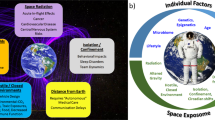
Red risks for a journey to the red planet: The highest priority human health risks for a mission to Mars
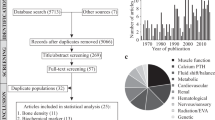
A systematic review and meta-analysis of bone loss in space travelers
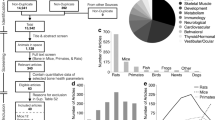
Bone health in spacefaring rodents and primates: systematic review and meta-analysis
Introduction.
For as long as humans have ventured into space, research has been performed to study the physiological effects of spaceflight. The claim is sometimes made that the only reason to do this research on humans in space is to provide the information that is needed to keep them alive and well when they are in space—the implication being that there is little or no fundamental scientific return from such research. 1 Here, we provide evidence to the contrary. In the course of applied research that is primarily focused on maintaining astronaut health in space, discoveries have been made that have a broader impact on fundamental scientific understanding. That these findings arose in the course of applied research suggests that there will be other interesting and important scientific discoveries when and if more open-ended exploratory science can be performed in space. We present here five areas of physiology that support this contention.
Bone Loss in Space: Countermeasures for Disuse
Even in the years prior to human spaceflight, clinical research suggested that weightlessness would lead to bone loss, although the details were uncertain. 2 , 3 Ongoing NASA research has provided a more general understanding of bone loss and delineation of the detailed effects of disuse on bone, independent of disease-related bone loss and recovery. The early Skylab flights and short-duration missions of Gemini and Apollo led to the development of densitometry techniques that are now used widely in clinical settings around the world. 4 , 5 This research shed light on the rapid bone loss caused by disuse conditions.
Spaceflight research found that bone loss could be continuous for several months in space, and suggested that recovery after flight would not be rapid, if it occurred at all. Measurements on the international crews of Mir, Shuttle/Mir, and ISS documented continuous loss of areal bone mineral density of 1–2% per month, which varied greatly between individuals, bones, bone compartments, and skeletal regions within the same individual. 6 , 7 , 8 These studies also showed the dichotomy between cortical and trabecular bone loss with disuse. Some recovery of lost bone does occur very slowly following return to Earth, but some loss within the trabecular compartment may be permanent. 8 , 9 , 10 This information has been important for NASA planning and also for terrestrial clinicians attempting to rehabilitate patients after significant periods of disuse. Mechanistically, during disuse, systemic markers of bone resorption and urinary calcium excretion are consistently elevated, while bone formation is unchanged, suggesting that remodeling is elevated and the dynamics are uncoupled. 11 Alterations in remodeling have been well documented in most bone diseases, and now it is known that spaceflight and disuse can result in altered remodeling in healthy subjects, hence the need to prioritize procedures to minimize the effects of disuse to the greatest extent possible. NASA has investigated exercise countermeasures, such as bicycle and treadmill ergometry and resistive weight training, that appear to be partially effective. 12 In addition to routine exercise, an antiresorptive agent, alendronate, taken weekly, has proved to be effective in reducing bone loss, remodeling rate, and urinary calcium excretion. 13 These results had been verified using the ground-based bed-rest model of weightlessness, without exercise. 14
Notwithstanding the obvious benefits of this research for science and astronaut health, these findings may also be important for disuse-related bone changes on Earth. For example, amputation, lower-leg fractures, ligament tears, and other clinically-required but temporary disuse conditions lead to bone loss with delayed or incomplete recovery. 15 , 16 The value of an antiresorptive medication in these surgical situations requires future validation. The spaceflight studies indicate that an early pharmacologic intervention at the beginning of a disuse episode could be effective in preventing bone loss and, thereby, preserve bone integrity (especially trabecular structure critical to bone strength).
Bone Loss and Nutrition: Calcium Metabolism and Dietary Proteins
Nutrition is critical for human health, especially during exploration in remote regions, where food and nutrient intake may be compromised. Spaceflight provides a highly controlled environment with healthy individuals and a high degree of monitoring. Therefore, it is an ideal experimental setting in which to analyze the association of nutrients with rapid bone loss and to test the effects of specific nutrient supplementation. This has led to a better understanding of the effects of dietary components on bone, 17 and of the effectiveness of vitamin D supplementation in individuals without natural ultraviolet light exposure. 18
Iron stores (reflected by serum ferritin) increase in the early weeks of spaceflight, then slowly return toward pre-flight levels. 19 The increase is associated with evidence of oxidative damage and bone resorption. Greater extent or duration of ferritin increase during spaceflight results in a greater decrease in bone mineral density (hip, trochanter, hip neck, pelvis) after long-duration flight. 20 Also, the ferritin increase has been shown to correlate with elevated biochemical markers of bone resorption and urinary calcium excretion during spaceflight. Several human and animal studies support these findings and show that mild iron excess (but still within a normal clinical range) is associated with bone loss by a mechanism believed to be related to oxidative stress. 19 , 21 The relationships between iron and bone loss during flight were observed in 4–6-month missions; these same relationships in a terrestrial study were observed after 3 years, 21 likely due to the fact that bone loss during spaceflight is approximately ten times faster than on Earth. These findings help identify relationships between nutrition, oxidative stress, and bone loss and also have implications for terrestrial health and medicine.
Other dietary factors can influence acid/base balance in the body, which in turn can affect the skeleton, a source of base (calcium carbonate) that can neutralize acid loads. Dietary proteins can contribute to acid load through the production of low levels of sulfuric acid. Therefore, a high dietary ratio of animal protein (rich in amino acids) to potassium (typically as base-producing, acid-neutralizing salts) is associated with increased bone breakdown. 20 Furthermore, supplementing a nominal diet with amino acids during extended bed rest (an analog of spaceflight) leads to increased acid load and increased bone resorption. 22 Recent spaceflight research has identified that the acid:base potential of the diet is negatively correlated with bone loss (more acidogenic, more bone loss). 17
The effect of diet on bone loss remains controversial—some studies have shown protective effects of a high protein diet, but some studies found a high protein diet could be detrimental. These discrepancies are likely due to other contributing factors, such as calcium intake. 23 , 24 , 25 As with almost any human research, controlling for all relevant variables and confounding factors is challenging. For example, postmenopausal women often suffer from decreased bone density, but these individuals have varying diets, levels of physical activity, comorbidities and genetic influences. Further, it can take years to observe any therapeutic or detrimental effects of diet since bone loss is much slower than in space. Astronaut populations are relatively homogenous and free of comorbidities yet experience accelerated bone resorption and consume foods from the same controlled and limited food system, with a shared key environmental stressor: microgravity. Therefore, the space environment holds the potential to provide insights into the therapeutic or detrimental effects of nutrients on bone loss that can be applied to clinical research.
Cardiovascular System: Lessons Learned About Central Venous Pressure and Left Ventricular End-Diastolic Volume
Blood and other fluids shift from the lower extremities to the upper body during spaceflight due to the absence of a hydrostatic gradient in weightlessness. 26 It has been speculated that the repositioning of fluids would increase cardiac preload and central venous pressure (CVP), with implications for cardiac function. (Preload, or end-diastolic volume, is the amount of blood in the ventricles at the end of cardiac filling, before the systolic “pulse” that sends blood to the peripheral circulation. Higher preload increases the volume of blood flow in the subsequent contraction.) CVP in space was first measured with catheters in arm (cubital) veins and was unexpectedly decreased in flight. 27 , 28 , 29 In another study, CVP was more directly measured with central fluid-filled catheters during the initial hours of two Space Shuttle missions. These and other measurements confirmed an in-flight reduction in CVP and also found an increase in left ventricular end-diastolic volume (LVEDV, the amount of blood in the ventricle at the end of filling, just before the systolic pulse). 30 , 31 It was surprising to find decreased CVP yet increased LVEDV because it is venous pressure (CVP) that provides the force to fill the ventricles (LVEDV). Decreased CVP reflects a decrease in cardiac preload and, thus, should result in a decrease in subsequent atrial volume and LVEDV.
The ostensible contradiction of a decrease in CVP and an increase in LVEDV 30 was later explained by data from the weightless phase of parabolic flight, where a decrease in CVP of 1.3 mm Hg was observed. 32 At the same time, esophageal pressure, which reflects intrathoracic pressure (inside the chest cavity, surrounding the heart), fell by 5.6 mm Hg. The fact that esophageal pressure fell more than CVP provided the key to understanding the simultaneous decrease in CVP and increase in LVEDV in weightlessness. While supine in 1 g, the thorax is mechanically compressed, which increases CVP relative to ambient pressure. The importance and magnitude of mechanical compression pressure for understanding preload changes to the heart was not known before CVP was measured in weightlessness. 32
The relationship between the expansion of the thorax and stroke volume and cardiac output observed during spaceflight has contributed to an understanding of the effects of posture on heart-lung interactions. The weightlessness-induced change in CVP relative to intrathoracic pressure (transmural CVP) during spaceflight leads to increases in stroke volume and cardiac output of 35% and 41%, respectively, compared to seated upright in 1 g, 33 in accordance with the well-known Starling effect 34 which states that stroke volume increases in response to increases in blood volume in the ventricles prior to contraction. Understanding that expansion of the thorax helps to increase stroke volume and cardiac output contributes to basic knowledge of the influence of gravity and posture on heart-lung interactions. As an example, measuring CVP as an indication of the change in cardiac preload during a change in posture (from supine to head-up or vice versa) can lead to erroneous interpretations of the measurements, if intrathoracic pressure is not taken into account. The front-to-back compression of the thorax while supine increases intrathoracic pressure, which leads to increased LVEDV despite decreased CVP. The same is likely also true when shifting from supine to horizontal lateral positions because of a different distribution of gravitational loading on the thorax.
The findings from space and parabolic flights are also relevant for understanding how intrathoracic pressure regulation can aid in the treatment of hypotension and in decreasing intracranial pressure. Use of an inspiratory threshold device (ITD), which increases resistance to inspiration, can increase cardiac filling via negative-pressure-induced expansion of the thorax during inspiration, resulting in the suction of more blood into the right atrium and ventricle. 35 The ITD can also decrease intracranial pressure in patients with intracranial hypertension by increasing venous return and decreasing cerebrospinal fluid pressure through the inspiratory expansion of the thorax. These medical advances would not have been possible without the measurements from spaceflight, parabolic flight, and bed-rest research.
Pulmonary Function: Gravity-Induced Lung Deformation
Gas exchange in the lung is accomplished by passive diffusion, in which inspired gas and circulating blood must be brought together in appropriate proportions across a very thin (alveolar) membrane. In the 1950s, after the advent of radiolabeled tracers, the effects of gravity on the perfusion of the lung were first appreciated. The first few studies found that ventilation varied according to gravity level and, together with very low pulmonary vascular perfusion pressures, affected gas exchange, with a gravity-induced reduction in exchange efficiency as a direct consequence of ventilation-perfusion mismatch. 36 , 37 , 38 , 39 These observations help to explain much of the age-related impairment in pulmonary gas exchange as the aging lung in geriatric patients deforms more under the influence of gravity.
The expectation then was that in weightlessness ventilation, perfusion, and the matching of ventilation to perfusion would become uniform (lacking in gradients due to gravity). 40 Observations showed that while ventilation (the air that reaches the alveoli) 41 and perfusion (the blood that reaches the alveoli) 42 were indeed much more uniform, some residual inhomogeneity remained, likely due to the complicated structure of the lung. The observations showed, more importantly, that the matching of ventilation to perfusion was no better than that seen on the ground. 43 This initially paradoxical observation, which could not be readily appreciated in terrestrial experiments, is now known to be a direct consequence of the coupling of ventilation and perfusion. Gravity deforms the lung, resulting in uneven ventilation, 44 and similarly causes uneven perfusion. 45 Thus, in the normal human lung, gravity serves effectively to maintain the matching of ventilation to perfusion through mechanical effects 46 and thus to maintain efficient gas exchange. However, as lung weight is increased – as is often the case in intensive-care situations with excess fluid accumulation – lung deformation increases, regions of the lung become unventilated, and gas exchange becomes compromised. Understanding the nature of lung deformation and how gravity affects gas exchange – an understanding improved through spaceflight studies— is a matter of critical importance in the intensive care unit where prone positioning in some patients results in significant reductions in mortality. 47
Sensorimotor and Neurovestibular Function: Perception and Orientation in Altered Gravity
Among the most widespread biomedical impacts from spaceflight may be those in the area of neurovestibular function, given its long history going back to high-performance aircraft flight, predating spaceflight. 48 Research in this area has contributed to basic understanding of the remarkable capacity for adaptive plasticity. Humans have a lifetime of experience and neural development (and many years of evolution) in a constant gravity field. The combination of sensory information that results from movement in this gravity field takes gravity into account. Consider a head tilt: the vestibular semicircular canals sense angular velocity, the vestibular otolith organs detect a change in orientation with respect to gravity, and proprioceptors are triggered by neck flexion. In a weightless environment, the otolith tilt signal is missing, but despite a lifetime of experience with normal Earth gravity, astronauts adjust to this “missing” otolith signal within a matter of days. 49 Aspects of this neuroplasticity have informed training programs to improve motor function in clinical populations. An example is a better understanding of the role of gravity loading in maintaining muscle and motor function, and the importance of maintaining loading to prevent degenerative changes in protein metabolism and muscle fibers that can impair rehabilitation after spinal-cord injury. 50
Another unexpected observation was the ability to evoke caloric nystagmus in orbital flight. 51 Nystagmus is the repetitive reflexive motion made by the eyes to maintain gaze stability when the head is rotated. It can also be stimulated, as a test of vestibular function, by irrigating the ear with hot or cold water, which sets up convection within the fluid of the semicircular canals. Since fluid in the canals under normal circumstances is only set in motion when the head moves, caloric stimulation mimics an extended head rotation and induces the corresponding nystagmus. The presence of caloric nystagmus in space was surprising because the dominant stimulus on Earth is convection in the fluid in the inner ear. With the weightlessness of space, there is no convection and therefore, there should be no caloric nystagmus. Later studies investigated this phenomenon and determined that there is a direct thermal effect of caloric stimulation on the semicircular canals of the vestibular system, 52 which slightly expands the canal membrane and induces fluid motion within the canal. This furthered the understanding of this very commonly used diagnostic tool.
Another neurovestibular discovery that was uncovered during spaceflight research was the role of otolith asymmetry on ocular alignment and space motion sickness. 53 The otolith organs in each vestibular labyrinth contain small crystals of calcium carbonate (otoconia); the relative motions of the otoconia detect linear accelerations and gravity. There is reason to believe that the body does not maintain perfect symmetry (equal masses) of the otoconia between the two inner ears, leading to slightly different sensitivities in vestibular sensing across the midline. 54 The weightlessness of spaceflight made it clear that there is a central compensation mechanism for this tonic imbalance that is normally appropriate for an Earth-gravity environment; changes in ocular alignment (mediated by the otolith organs) and susceptibility to space motion sickness have been correlated with this asymmetry, which can be measured with simple assessment of the alignment of the two eyes in different gravity levels. 53 Recognition of the role of such otolith asymmetry in vestibular-mediated responses has led to research that examines changes in one such response – vertical and torsional alignments of the eyes – under peripheral or central insult. Assessment of this response is aiding the understanding of traumatic injuries due to blast in military populations. 55
The challenges of performing physiological research in space should not be underestimated. This type of research is subject to many confounds: significant operational constraints, limited experimental controls, limited opportunities for repetition and validation, and small numbers of subjects. Despite these complications, NASA and its international partners have carried out a successful research program that has produced many important results. These results not only provide practical information to maintain astronaut health and safety in space, 56 they also provide important information for fundamental scientific understanding. These scientific results also help us catalog the range of possible adaptive processes that might have aided in our development and adjustment to Earth, and suggest limits on the ability to live in extreme settings. All of these provide a broader perspective not just on physiology and human health, but on our place in the universe.
Reporting summary
Further information on research design is available in the Nature Research Reporting Summary linked to this article.
Shelhamer, M. Why send humans into space? Science and non-science motivations for human space flight. Space Policy 42 , 37–40 (2017).
Google Scholar
Whedon, G. D. in Bone as a Tissue (ed. Rodahl, K.) (McGraw-Hill Co., 1960).
Heaney, R. P. Radiocalcium metabolism in disuse osteoporosis in man. Am. J. Med. 33 , 188–200 (1962).
CAS PubMed Google Scholar
Smith, M. C., Rambaut, P. C., Vogel, J. M. & Whittle, M. W. in Biomedical Results from Skylab (eds Johnston, R. S. & Dietlein, L. F.) (NASA SP–377, 1977).
Rambaut, P. C. & Johnston, R. S. Prolonged weightlessness and calcium loss in man. Acta Astronaut. 6 , 1113–1122 (1979).
Oganov, V. S. et al. (1992) Bone mineral density in cosmonauts after 4.5-6 month long flights aboard orbital station Mir. Aerospace. Environ. Med. 26 , 20–24 (1992).
CAS Google Scholar
LeBlanc, A. et al. (2000) Bone mineral and lean tissue loss after long duration space flight. J. Musculoskelet. Neuronal Interact. 1 , 157–160 (2000).
Lang, T. et al. Cortical and trabecular bone mineral loss from the spine and hip in long-duration spaceflight. J. Bone Min. Res. 19 , 1006–1012 (2004).
Lang, T. F., LeBlanc, A. D., Evans, H. J. & Lu, Y. Adaptation of the proximal femur to skeletal reloading after long-duration spaceflight. J. Bone Min. Res. 21 , 1224–1229 (2006).
Carpenter, R. D., LeBlanc, A. D., Evans, H., Sibonga, J. D. & Lang, T. F. Long term changes in the density and structure of the human hip and spine after long-duration spaceflight. Acta Astronaut . 67 , 71–81 (2010).
Smith, S. M. et al. Bone metabolism and renal stone risk during International Space Station missions. Bone 81 , 712–720 (2015).
Smith, S. M. et al. Benefits for bone from resistance exercise and nutrition in long-duration spaceflight: evidence from biochemistry and densitometry. J. Bone Min. Res. 27 , 1896–1906 (2012).
LeBlanc, A. et al. Bisphosphonates as a supplement to exercise to protect bone during long duration space flight. Osteoporos. Int. 24 , 2105–2114 (2013).
LeBlanc, A. D. et al. Alendronate as an effective countermeasure to disuse induced bone loss. J. Musculoskelet. Neuronal. Interact. 2 , 335–343 (2002).
Sherk, V. D., Bemben, M. G. & Bemben, D. A. Bone density and bone geometry in transtibial and transfemoral amputees. J. Bone Miner. Res. 23 , 1449–1457 (2008).
PubMed Google Scholar
Clement, E. P., Wiel, H., Parka, P., Roos, J. C. & Lips, P. Long-term consequences of fracture of the lower leg: Cross-sectional study and long-term longitudinal follow-up of bone mineral density in the hip after fracture of lower leg. Bone 24 , 131–134 (1999).
Zwart, S. R. et al. Dietary acid load and bone turnover during long-duration spaceflight and bed rest. Am. J. Clin. Nut 107 , 834–844 (2018).
Smith, S. M., Gardner, K. K., Locke, J. & Zwart, S. R. Vitamin D supplementation during Antarctic winter. Am. J. Clin. Nutr. 89 , 1092–1098 (2009).
Zwart, S. R., Morgan, J. L. & Smith, S. M. Iron status and its relations with oxidative damage and bone loss during long-duration space flight on the International Space Station. Am. J. Clin. Nutr. 98 , 217–223 (2013).
Zwart, S. R., Hargens, A. R. & Smith, S. M. The ratio of animal protein intake to potassium intake is a predictor of bone resorption in space flight analogues and in ambulatory subjects. Am. J. Clin. Nutr. 80 , 1058–1065 (2004).
Kim, B. J. et al. Iron overload accelerates bone loss in healthy postmenopausal women and middle-aged men: a 3-year retrospective longitudinal study. J. Bone Miner. Res. 27 , 2279–2290 (2012).
Zwart, S. R. et al. Amino acid supplementation alters bone metabolism during simulated weightlessness. J. Appl. Physiol. 99 , 134–140 (2005).
Dawson-Hughes, B. Calcium and protein in bone health. Proc. Nutr. Soc. 62 , 505–509 (2003).
Steell, L. et al. Associations of dietary protein intake with bone mineral density: an observational study in 70,215 UK Biobank participants. Bone 120 , 38–43 (2019).
Thorpe, M. P. & Evans, E. M. Dietary protein and bone health: harmonizing conflicting theories. Nutr. Rev. 69 , 215–230 (2011).
Thornton, W. E., Hoffler, G. W. & Rummel, J. A. in Biomedical Results from Skylab (eds Johnston, R. S. & Dietlein, L. F.) (NASA SP-377, 1977).
Kirsch, K. A. et al. Venous pressure in man during weightlessness. Science 225 , 218–219 (1984).
Kirsch, K., Haenel, F. & Rocker, L. Venous pressure in microgravity. Naturwissenschaften 73 , 447–449 (1986).
Gauer, O. H. & Sieker, H. O. The continuous recording of central venous pressure changes from an arm vein. Circ. Res. 4 , 74–78 (1956).
Buckey, J. C. et al. Central venous pressure in space. J. Appl. Physiol. 81 , 19–25 (1996).
Foldager, N. et al. Central venous pressure in humans during microgravity. J. Appl. Physiol. 81 , 408–412 (1996).
Videbaek, R. & Norsk, P. Atrial distension in humans during microgravity induced by parabolic flights. J. Appl. Physiol. 83 , 1862–1866 (1997).
Norsk, P., Asmar, A., Damgaard, M. & Christensen, N. J. Fluid shifts, vasodilatation and ambulatory blood pressure reduction during long duration spaceflight. J. Physiol. 593 , 573–584 (2015).
CAS PubMed PubMed Central Google Scholar
Patterson, S. W. & Starling, E. H. On the mechanical factors which determine the output of the ventricles. J. Physiol. 48 , 357–379 (1914).
Convertino, V. A. et al. Optimizing the respiratory pump: Harnessing inspiratory resistance to treat systemic hypotension. Resp. Care 56 , 846–857 (2011).
West, J. B. & Dollery, C. T. Distribution of blood flow and ventilation-perfusion ratio in the lung, measured with radioactive CO 2 . J. Appl. Physiol. 15 , 405–410 (1960).
West, J. B. in Respiratory Physiology: People and Ideas (ed. West, J. B.) (Oxford Press, 1966).
Bryan, A. C., Milic-Emili, J. & Pengelly, D. Effect of gravity on the distribution of pulmonary ventilation. J. Appl. Physiol. 21 , 778–784 (1966).
West, J. B., Dollery, C. T. & Naimark, A. Distribution of bloodflow in isolated lung: Relation to vascular and alveolar pressures. J. Appl. Physiol. 19 , 713–724 (1964).
Guy, H. J., Prisk, G. K. & West, J. B. Pulmonary function in microgravity: Spacelab 4 and beyond. Acta Astronaut. 17 , 1139–1143 (1988).
Guy, H. J. B., Prisk, G. K., Elliott, A. R., Deutschman, R. A. & West, J. B. Inhomogeneity of pulmonary ventilation during sustained microgravity as determined by single-breath washouts. J. Appl. Physiol. 76 , 1719–1729 (1994).
Prisk, G. K., Guy, H. J. B., Elliott, A. R. & West, J. B. Inhomogeneity of pulmonary perfusion during sustained microgravity on SLS-1. J. Appl. Physiol. 76 , 1730–1738 (1994).
Prisk, G. K., Elliott, A. R., Guy, H. J. B., Kosonen, J. M. & West, J. B. Pulmonary gas exchange and its determinants during sustained microgravity on Spacelabs SLS-1 and SLS-2. J. Appl. Physiol. 79 , 1290–1298 (1995).
Sa, R. C. et al. Vertical distribution of specific ventilation in normal supine humans measured using oxygen-enhanced proton MRI. J. Appl. Physiol. 109 , 1950–1959 (2010).
PubMed PubMed Central Google Scholar
Hopkins, S. R. et al. Vertical gradients in regional lung density and perfusion in the human lung: the Slinky effect. J. Appl. Physiol. 103 , 240–248 (2007).
Henderson, A. C. et al. The gravitational distribution of ventilation-perfusion ratio is more uniform in prone than supine posture in the normal human lung. J. Appl. Physiol. 115 , 313–324 (2013).
Scholten, E. L., Beitler, J. R., Prisk, G. K. & Malhotra, A. Treatment of ARDS with prone positioning. Chest 151 , 215–224 (2017).
Hoff, E. C. & Fulton, J. F. A bibliography of aviation medicine . (Charles C. Thomas Publishers, 1942).
Reschke, M. F., Bloomberg, J. J., Harm, D. L. & Paloski, W. H. Space flight and neurovestibular adaptation. J. Clin. Pharm. 34 , 609–617 (1994).
Edgerton, V. R. et al. How the science and engineering of spaceflight contribute to understanding the plasticity of spinal cord injury. Acta Astronaut. 47 , 51–62 (2000).
Scherer, H., Brandt, U., Clarke, A. H., Merbold, U. & Parker, R. European vestibular experiments on the Spacelab-1 mission: 3. Caloric nystagmus in microgravity. Exp. Brain Res. 64 , 255–263 (1986).
Scherer, H. & Clarke, A. H. The caloric vestibular reaction in space. Physiological considerations. Acta Otolaryngol. 100 , 328–336 (1985).
Markham, C. H. & Diamond, S. G. A predictive test for space motion sickness. J. Vestib. Res. 3 , 289–295 (1993).
Gorgiladze, G. I., Samarin, G. I. & Brianov, I. I. Interlabyrinthine asymmetry, vestibular dysfunction and space motion sickness. Kosm. Biol. Aviakosm. Med. 20 , 19–31 (1986).
Schubert, M. C. et al. Prototype tests of vertical and torsional alignment nulling for screening vestibular function. J. Vestib. Res 27 , 173–176 (2017).
NASA Human Research Program, Annual Reports. https://www.nasa.gov/hrp/research/documents .
Download references
Acknowledgements
We appreciate the assistance of Marie-Elizabeth Barabas, of the npj Microgravity editorial staff, in editing of the final paper. AL was supported by numerous NASA grants and contracts. GKP was supported by numerous NASA contracts, grants, and through a cooperative agreement with the National Space Biomedical Research Institute. JS’s science expertise for this report was supported by the Human Health Countermeasures Element of the NASA Human Research Program. Nutrition research support was provided by the Human Health Countermeasures Element of the Human Research Program (S.S. and S.Z.). Support from NNX16A069A, NASA Cooperative Agreement to Baylor College of Medicine for the Translational Research Institute for Space Health (TRISH), is gratefully acknowledged (P.N.).
Author information
Authors and affiliations.
Johns Hopkins University School of Medicine, Baltimore, MD, USA
Mark Shelhamer
NASA Johnson Space Center, Houston, TX, USA
Jacob Bloomberg, Jean Sibonga & Scott M. Smith
Baylor College of Medicine, Houston, TX, USA
Adrian LeBlanc & Peter Norsk
University of California, San Diego, CA, USA
G. Kim Prisk
University of Texas Medical Branch, Galveston, TX, USA
Sara R. Zwart
You can also search for this author in PubMed Google Scholar
Contributions
M.S.—conceived of the manuscript topic and assembled text on specific physiological topics as supplied by the individual co-authors (A.L. and J.S.—bone loss, S.S. and S.Z.—nutrition, G.K.P.—pulmonary function, P.N.—cardiovascular, J.B. and M.S.—sensorimotor).
Corresponding author
Correspondence to Mark Shelhamer .
Ethics declarations
Competing interests.
The authors declare no competing interests.
Additional information
Publisher’s note Springer Nature remains neutral with regard to jurisdictional claims in published maps and institutional affiliations.
Supplementary information
Reporting summary checklist, rights and permissions.
Open Access This article is licensed under a Creative Commons Attribution 4.0 International License, which permits use, sharing, adaptation, distribution and reproduction in any medium or format, as long as you give appropriate credit to the original author(s) and the source, provide a link to the Creative Commons license, and indicate if changes were made. The images or other third party material in this article are included in the article’s Creative Commons license, unless indicated otherwise in a credit line to the material. If material is not included in the article’s Creative Commons license and your intended use is not permitted by statutory regulation or exceeds the permitted use, you will need to obtain permission directly from the copyright holder. To view a copy of this license, visit http://creativecommons.org/licenses/by/4.0/ .
Reprints and permissions
About this article
Cite this article.
Shelhamer, M., Bloomberg, J., LeBlanc, A. et al. Selected discoveries from human research in space that are relevant to human health on Earth. npj Microgravity 6 , 5 (2020). https://doi.org/10.1038/s41526-020-0095-y
Download citation
Received : 17 October 2018
Accepted : 06 December 2019
Published : 12 February 2020
DOI : https://doi.org/10.1038/s41526-020-0095-y
Share this article
Anyone you share the following link with will be able to read this content:
Sorry, a shareable link is not currently available for this article.
Provided by the Springer Nature SharedIt content-sharing initiative
This article is cited by
Simulated microgravity improves maturation of cardiomyocytes derived from human induced pluripotent stem cells.
- Parvin Forghani
- Aysha Rashid
Scientific Reports (2024)
Space microgravity increases expression of genes associated with proliferation and differentiation in human cardiac spheres
- Antonio Rampoldi
npj Microgravity (2023)
Hemolysis contributes to anemia during long-duration space flight
- Nibras Shahin
- Hakim Louati
Nature Medicine (2022)
From Sequence Analysis to Application
- Jaspreet Kaur
Resonance (2022)
Antioxidant metabolism and oxidative damage in Anthemis gilanica cell line under fast clinorotation
- Hassanpour Halimeh
Plant Cell, Tissue and Organ Culture (PCTOC) (2022)
Quick links
- Explore articles by subject
- Guide to authors
- Editorial policies
Sign up for the Nature Briefing: Translational Research newsletter — top stories in biotechnology, drug discovery and pharma.
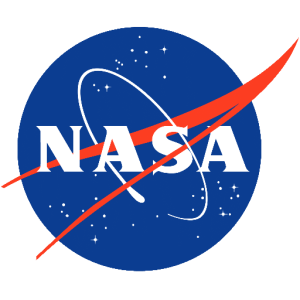
Welcome to the NASA Space Life Sciences Library (NSLSL)
The NASA Space Life Sciences Library (NSLSL) seeks to consolidate global space life sciences literature into a single database to support research that addresses the effects of the space environment on biological systems.
NASA Space Life Sciences Organizations
The library is co-funded by NASA’s Biological and Physical Sciences (BPS) division and Kennedy Space Center (KSC) and is managed by the Utilization and Life Sciences Office (UB) within the KSC’s Exploration Research & Technology program while the publications themselves exist in, and come from, the public domain and are funded by their respective institutions.
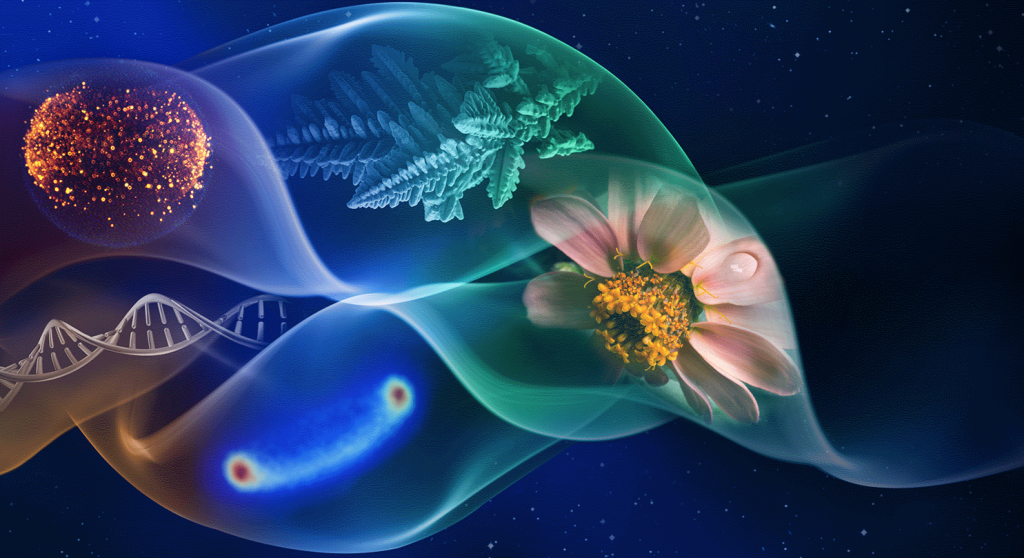
Library Purpose
The purpose of the library is to consolidate world-wide, peer-reviewed articles, technical publications, dissertations, and patent publications related to Space Life Science research into a singular, global, central repository that is accessible to the public.
NSLSL Public Library
The public-facing library is accessible to all space life science researchers and scientists around the globe. Here, you can search 200K+ articles related to space life science research and submit new, relevant publications to be included in the library.
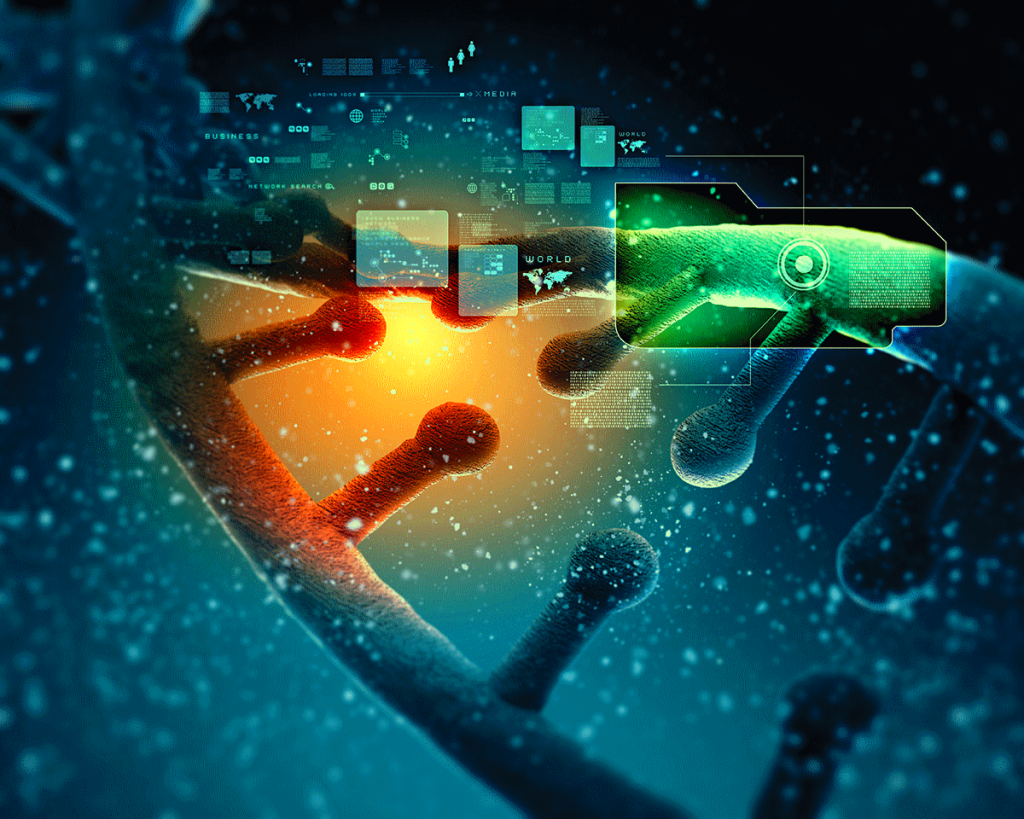
Meta-analysis of the space flight and microgravity response…
Richard Barker

Comprehensive analyses of plant hormones in etiolated pea and…
Chiaki Yamazaki

Microbiological and Nutritional Analysis of Lettuce Crops…
Christina L. M. Khodadad
Global News
News, highlights, and featurettes of Space Life Science in action around the globe.
3D Printing, Muscle Cells, and Mold Experiments Launching to Space Station
Water Bears in Space: If you’re not familiar with water bears , or tardigrades, they are super-tiny animals that are best known for…
Biological Research In Canisters-24: An Experiment Frozen in Time and Space
NASA-Funded Research Creates DNA-like Molecule to Aid Search for Alien Life
NASA Research will examine how spaceflight-like conditions impact telomere length, and how that in turn impacts muscle cell function
The BioScience-4 mission is the first study to investigate the multiplication of nervous system stem cells in microgravity
Growing a Smarter Model for Brain Research in Space: An investigation that sent brain organoids to the International Space Station
Research into a novel method for detecting molecular damage in astronaut DNA led to a new cancer test
Researchers Develop Better Ways to Culture Living Heart Cells on the International Space Station
Microgravity Works Wonders With Plant Transplants: Astronaut transplants pak choi in the agency’s Vegetable Production System
HRF-Veg investigation examines the behavioral health benefits of having live plants and fresh food in space
Creating New and Better Drugs with Protein Crystal Growth Experiments
Home » SciSpacE Disciplines » Life Sciences
Life Sciences
Space Life Sciences cover both space health sciences and space biology. There are four main obstacles to life in space: variable gravity, space radiation, isolation, and confinement.
Mission : Advance human exploration into deep space, harvesting unique knowledge that can improve life and health in space and on Earth.
Vision : By 2035, Europeans will have ensured sustainable and safe human deep space exploration through the implementation of innovative life science technologies, optimised countermeasures, and translational health capabilities.
Objectives : The Human and Robotic Exploration Programme Space Life Sciences Activities seek to:
- Better understand the fundamental mechanisms and responses to the different deep space stressors on biological and physiological processes
- Optimise and personalise countermeasures to mitigate the deep space risks
- Push the frontiers of habitability to advance sustainable human exploration in deep space
- Foster and inspire translation of space-acquired scientific knowledge to address terrestrial challenges

Topical teams
- 3D Bioprinting of Living Tissues for Utilisation in Space Exploration and Extra-Terrestrial Human Settlements
- Bioprocesses and Bioreactors in Space
- Bone Tissue Engineering in Space
- Dental Health
- Hibernation and Torpor
- Parastronaut Physiology
- Personalised Medicine Approaches to Space Exploration
- Pharmacological Countermeasures
- Potential of Insects as Nutritional Food in Spaceflight
- Space Analogs and Human Performance
- Space Omics
- Space Radiation Research for the Lunar Missions
- Space Synthetic Biology
- Stress Challenges and Immunity in Space
- Venous Thrombo-Embolisms
Success Stories related to Life Sciences

Biomining in space – BioRock
The ESA BioRock experiment is looking into using microbes to build an extra-terrestrial habitat. To build a sustainable presence on the moon

Where is up and where is down?
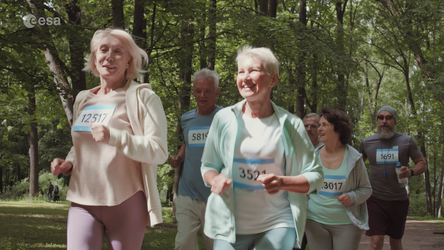
Aging. We research. You benefit.
Did you know that living in space has similar effects on the body to natural aging on Earth? Spaceflight research is helping

BIOFILMS – Material Matters

ESA CORA Ground Based Facilities Symposium 2023
The first ESA CORA-Ground Based Facilities Symposium was held 05 December 2023 at ESA – ESTEC, The Netherlands, and online to allow

Bedtime routine for space
Current research opportunities, ao-2024-lunarpf.
Deadline: October 11, 2024
Through this Announcement of Opportunity, ESA is soliciting for research experiments to be implemented during a lunar gravity Parabolic Flight campaign.
AO-2024-Isolation
Deadline: June 14, 2024
ESA is soliciting for research experiments to be implemented during a 100-day isolation and confinement study.
Call for Research MD for Concordia
Deadline: February 12, 2024
Apply now to become the Research Medical Doctor who implements the biomedical programme at the Concordia station at Antarctica
Call for LEO Facility Definition Teams (FDTs) Membership
Deadline: October 8, 2023
Join our SciSpacE Facility Definition Teams (FDTs) to support the definition of science activities for the post-ISS era.
News related to Life Sciences
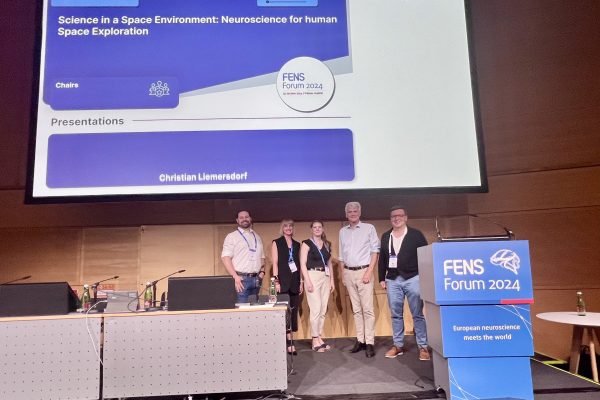
ESA Networking session at FENS2024
🚀 We had an incredible time at FENS2024! We explored fascinating insights into cerebrospinal fluid movement, navigation mechanisms, and other topics that
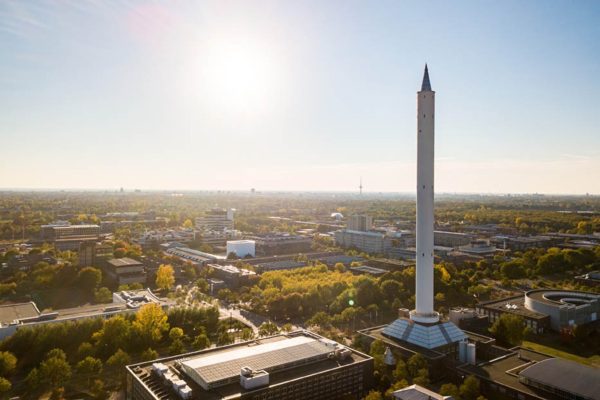
ESA’s OoDrop experiment on Drop Tower
Why do astronauts suffer from significant muscle wasting and bone loss while in zero gravity? Dr. Simon Wüest from the Lucerne University
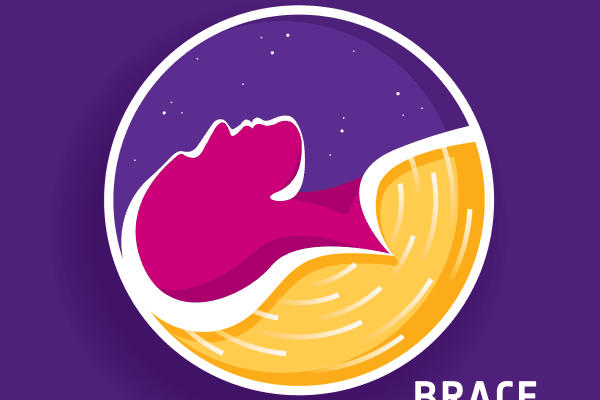
BRACE Bedrest – ready for round 2!
ESA, with support of CNES, is continuing the second part of a new 60-day bedrest study at the MEDES Space Clinic in
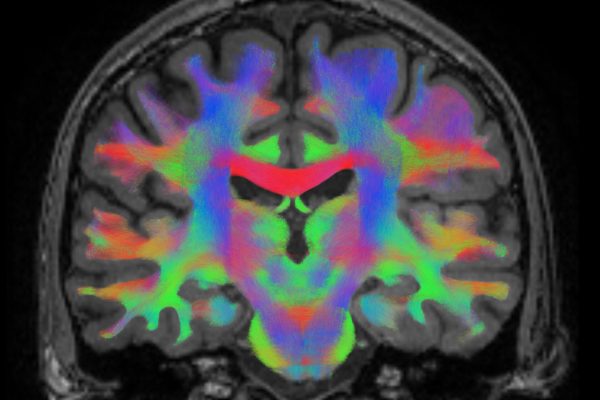
ESA’s “BRAIN DTI” experiment team awarded with Compelling Results award
ESA’s BRAIN DTI experiment, assessing how the brain adapts to spaceflight making use of MRI brain scans, has been honoured with the
Events related to Life Sciences
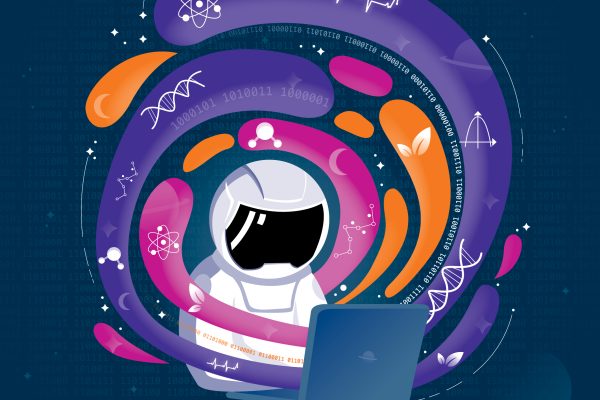
ESA Space Omics Hackathon
Join us for a 5-day virtual ESA Space Omics Hackathon to tackle space exploration challenges using NASA GeneLab omics datasets. Don’t miss
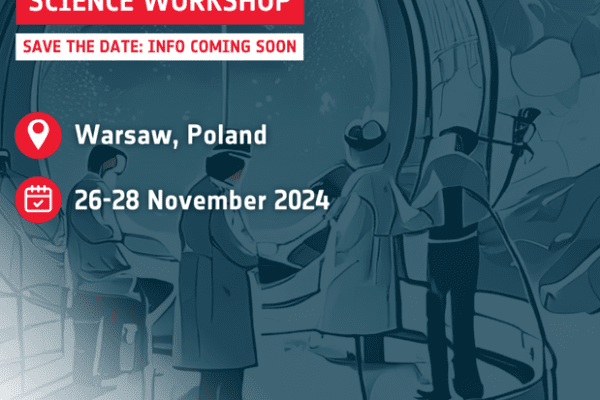
ESA Exploration Science Workshop
Save the date : info coming soon
Stay up to date
Subscribe to the SciSpacE newsletter to receive the latest news about research opportunties, directly in your inbox!

Breakthroughs in Space Life Science Research
From Apollo 16 to the ISS
- © 2021
- Günter Ruyters 0 ,
- Markus Braun 1 ,
- Katrin Maria Stang 2
Retired, Rheinbreitbach, Germany
You can also search for this author in PubMed Google Scholar
German Space Agency, Research and Exploration, German Aerospace Center (DLR), Bonn, Germany
- Gives a unique overview of over 70 years of space life science research with focus on Europe
- Highlights the key findings in space life science research
- Emphasizes the most innovative developments for terrestrial medical applications
- Provides an outlook on space life sciences in the upcoming era of space exploration
Part of the book series: SpringerBriefs in Space Life Sciences (BRIEFSSLS)
2173 Accesses
4 Citations
This is a preview of subscription content, log in via an institution to check access.
Access this book
Subscribe and save.
- Get 10 units per month
- Download Article/Chapter or eBook
- 1 Unit = 1 Article or 1 Chapter
- Cancel anytime
- Available as EPUB and PDF
- Read on any device
- Instant download
- Own it forever
- Compact, lightweight edition
- Dispatched in 3 to 5 business days
- Free shipping worldwide - see info
Tax calculation will be finalised at checkout
Other ways to access
Licence this eBook for your library
Institutional subscriptions
About this book
This last volume of the SpringerBriefs in Space Life Sciences series is setup in 5 main parts.
The 1st part shortly summarizes the history of life science research in space from the late 40s until today with focus on Europe and Germany, followed by a part on describing flight opportunities including the Space Shuttle/Spacelab system and the International Space Station ISS; in the 3 rd part it focuses on extraordinary success stories of this constantly challenging research program and highlights some important key findings in space life science research. The book introduces in the 4 th part innovative developments in non-invasive biomedical diagnostics and training methods for astronauts that emerge from this program and are of benefit for people on Earth especially in the aging society. Last but not least in its 5 th part it closes with an outlook on the future of space life sciences in the upcoming era of space exploration.
The book is intended for students and research scientists in the life sciences and biomedicine as well as for interested lay persons, who wish to get an overview of space life science research: its´ early days, current status and future directions.
Similar content being viewed by others

Highlights of Human Spaceflight in Europe: ESA and DLR

Space as an Extreme Environment—Galactic Adventures: Exploring the Limits of Human Mind and Body, One Planet at a Time
- MIR Mission
- Research in Space
- Biology in Space
- Innovative Developments for Space
- Microgravity
- International Space Station
- Gravity Perception
- Extraordinary Conditions
- Space Exploration
Table of contents (5 chapters)
Front matter, introduction: space life sciences—basic research and applications under extraordinary conditions.
- Günter Ruyters, Markus Braun, Katrin Maria Stang
A Long Way for Europe and Germany: From Apollo 16 to the International Space Station ISS
Success stories: incremental progress and scientific breakthroughs in life science research, success stories: innovative developments for biomedical diagnostics and preventative health care, space life sciences in the exploration era: an outlook on future challenges and opportunities, authors and affiliations.
Günter Ruyters
Markus Braun, Katrin Maria Stang
About the authors
Günter Ruyters is the former Head of Germany´s Space Life Sciences Program at the German Space Administration, German Aerospace Center DLR and served as Germany´s delegate of the Human Spaceflight, Microgravity and Exploration Program Board of the European Space Agency ESA. He was also appointed professor at the Faculty of Biology, University of Bielefeld.
Katrin Maria Stang is Parabolic Flight Program Manager and Coordinator for the Human Research Program at the Department of Research and Exploration at the German Space Agency, German Aerospace Center (DLR). Her responsibilities include management of experiment hardware development for the International Space Station and coordination of the utilization of ground analogues for human physiology projects.
Bibliographic Information
Book Title : Breakthroughs in Space Life Science Research
Book Subtitle : From Apollo 16 to the ISS
Authors : Günter Ruyters, Markus Braun, Katrin Maria Stang
Series Title : SpringerBriefs in Space Life Sciences
DOI : https://doi.org/10.1007/978-3-030-74022-1
Publisher : Springer Cham
eBook Packages : Biomedical and Life Sciences , Biomedical and Life Sciences (R0)
Copyright Information : Springer Nature Switzerland AG 2021
Softcover ISBN : 978-3-030-74021-4 Published: 12 June 2021
eBook ISBN : 978-3-030-74022-1 Published: 10 June 2021
Series ISSN : 2196-5560
Series E-ISSN : 2196-5579
Edition Number : 1
Number of Pages : XVII, 155
Number of Illustrations : 4 b/w illustrations, 30 illustrations in colour
Topics : Biomedicine, general , Cell Biology , Space Sciences (including Extraterrestrial Physics, Space Exploration and Astronautics) , Aerospace Technology and Astronautics
- Publish with us
Policies and ethics
- Find a journal
- Track your research
Life Sciences in Space Research (LSSR)
- LSSR page
- Editorial Board
- Most Valued Reviewers
- Science Direct
- Guide for Authors
- Submit manuscripts
- OpenAccess articles – free to read
- Special Issues
Life Sciences in Space Research ( LSSR ), COSPAR’s newest journal, publishes high quality original research and state of the art review articles in areas covered by Commission F (life sciences) of COSPAR. The journal replaces the LS section of Advances in Space Research (ASR). For more information on the journal’s contents, ordering information, etc., as well as a complete list of and access to all issues published, please visit Elsevier’s LSSR page . Life Sciences in Space Research (LSSR) has a 2021 Impact Factor of 2.73. More exciting news for LSSR – the journal has been accepted for SCIE, Science Citation Index Expanded. The journal is already included in MEDLINE/PubMed. Click the ScienceDirect link for a quick look at the title of papers appearing in each volume. Life Sciences in Space Research is published under the supervision of its Editorial Board .
Open Access Special Issue:
- Breaking the Limit: Radiation Countermeasures for Space Exploration Exposure , Volume 35, November 2022
Manuscripts in the following areas are considered: – Astrobiology
– Prebiotic chemistry and origin of life
– Life in extreme environments
– Habitability in the solar system and beyond
– Ecological life support and sustainability
– Functionality, monitoring and control of ecosystem in space environment
– Animal models in space research
– Effects of space flight conditions on human bodies
– Non-cancer health effects of space radiation, space flight
– Space radiation risk assessment and countermeasures
– Space radiation dosimetry- measurements, modeling and detector development
– Gravitational effects in biological systems
– Effects of space radiation in living organisms at the cellular and molecular levels

NASA Sends More Science to Space, More Strides for Future Exploration
New experiments aboard NASA’s Northrop Grumman 21st cargo resupply mission aim to pioneer scientific discoveries in microgravity on the International Space Station.
Northrop Grumman’s Cygnus spacecraft, filled with nearly 8,500 pounds of supplies, launched Aug. 4 atop a SpaceX Falcon 9 rocket from Space Launch Complex 40 at Cape Canaveral Space Force Station in Florida. Biological and physical investigations aboard the spacecraft included experiments studying the impacts of microgravity on plants (grass), how packed bed reactors could improve water purification both in space and on Earth, and observations on new rounds of samples that will allow scientists to learn more about the characteristics of different materials as they change phases on the tiniest scales.
Grass Growth & Bio-Regenerative Support
The cultivation of plants is crucial for developing bio-regenerative life support systems in space. However, growing them in microgravity affects photosynthesis, the process by which plants generate oxygen and convert carbon dioxide into food for astronauts. The C4 Photosynthesis in Space Advanced Plant Experiment-09 investigation will study how two grasses ( Brachypodium distachyon and Setaria viridis ), with different approaches to photosynthesis, respond to microgravity and high carbon dioxide levels during the spaceflight. The insights gained from this research will pave the way for more effective integration of plants on Earth and in future space habitats. This experiment was originally scheduled to be aboard NASA’s SpaceX 30th cargo resupply mission but was moved to the NG-21 launch.

Water Purification & Gravity
The Packed Bed Reactor Experiment – Water Recovery Series aboard NG-21 will be operated on the space station and will study the hydrodynamics (pressure drop, flow regimes, and flow instability) of two-phase flow (nitrogen gas-water mixture) in microgravity in various types of filters and openings. These samples are important for fluid systems used in life support and water purification and recovery processes. Outcomes of this research will be used to develop design tools and correlations for pressure drop prediction across the various prototypes used in lunar and Martian missions and beyond.

Removing Impurities in Melted Materials
The Electrostatic Levitation Furnace –4 experiment led by JAXA (Japan Aerospace Exploration Agency), one of NASA’s space station international partners, includes 20 new test samples. Its goal is to continue establishing guidelines for measuring different thermophysical properties of various samples at temperatures greater than 2,000 degrees Celsius.
Transforming raw materials from a liquid to solid form requires the use of a container, known as a crucible, which is used to both heat and hold the substance as it cools down and hardens. During this process, a chemical reaction occurs between the substance and the crucible, and impurities are released and absorbed in the plasma. The Electrostatic Levitation Furnace is the hardware that allows scientists to remove this contaminating part of the process by creating space between the liquid and container — levitating the sample while heated.

More Materials Science: Getting to the Core
The Electromagnetic Levitator , an ESA (European Space Agency) levitation facility, which is celebrating a decade aboard the International Space Station, enables scientists to conduct materials research on at least two elements, known as alloys, in a microgravity environment. By studying the core of the physics taking place, researchers can perform experiments to better understand the steps leading up to solidifying and changing phases. This knowledge could contribute to advancements in the manufacturing industry by providing scientists with more information to develop the latest and more reliable materials for activities like 3D printing.

Related Resources
NASA’s 21st Northrop Grumman Mission Launches Scientific Studies to Station
ESA - Electromagnetic Levitator turns ten
NASA’s Biological and Physical Sciences Division pioneers scientific discovery and enables exploration by using space environments to conduct investigations not possible on Earth. Studying biological and physical phenomenon under extreme conditions allows researchers to advance the fundamental scientific knowledge required to go farther and stay longer in space, while also benefitting life on Earth.
Related Terms
- Biological & Physical Sciences
- Glenn Research Center
- ISS Research
- Kennedy Space Center
- Marshall Space Flight Center
- Materials Science
- Physical Sciences
- Plant Biology
- Space Biology
Explore More


Quantum Scale Sensors used to Measure Planetary Scale Magnetic Fields

NASA Additive Manufacturing Project Shapes Future for Agency, Industry Rocket Makers
The widespread commercial adoption of additive manufacturing technologies, commonly known as 3D printing, is no surprise to design engineers at NASA’s Marshall Space Flight Center in Huntsville, Alabama whose research created stronger, lighter weight materials and new manufacturing processes to make rocket parts. NASA’s RAMPT (Rapid Analysis and Manufacturing Propulsion Technology) project is on the […]

The Marshall Star for July 31, 2024
SLS Core Stage Rolls Inside Vehicle Assembly Building at Kennedy NASA’s SLS (Space Launch System) rocket core stage for the Artemis II mission is inside the Vehicle Assembly Building at the agency’s Kennedy Space Center. Tugboats and towing vessels moved the barge and core stage 900-miles to the Florida spaceport from NASA’s Michoud Assembly Facility, where it was […]
The ESA Life Sciences Programme
Introduction, life sciences: results of previous experiments, programmatic background.
Life Sciences in Space Research
- Life Sciences in Space Research 6:79-86

- Global Ecotechnics Corporation
Abstract and Figures

Discover the world's research
- 25+ million members
- 160+ million publication pages
- 2.3+ billion citations
- NEUROSCI BIOBEHAV R

- Paola Barros Delben

- Joice Mathew

- Eftychia Symeonidou
- John Maxwell Halley

- Christine Hawkes

- Jonathan Stone
- John Mitrofanis

- Life Support Biosph Sci

- R. Helmreich
- Robert B. Bechtel
- Taber MacCallum
- Jane Poynter
- Wilfred Ruprecht Bion
- Recruit researchers
- Join for free
- Login Email Tip: Most researchers use their institutional email address as their ResearchGate login Password Forgot password? Keep me logged in Log in or Continue with Google Welcome back! Please log in. Email · Hint Tip: Most researchers use their institutional email address as their ResearchGate login Password Forgot password? Keep me logged in Log in or Continue with Google No account? Sign up
Cancer Research in Space for Life on Earth: Five Projects Selected Through ISS National Lab Solicitation in Partnership With NASA
News provided by
Jul 30, 2024, 13:21 ET
Share this article
Inaugural Igniting Innovation research announcement is providing more than $7 million in funding to advance cancer research through space-based R&D
BOSTON , July 30, 2024 /PRNewswire/ -- The International Space Station (ISS) National Laboratory, in partnership with NASA's Biological and Physical Sciences (BPS) division, jointly announced the selection of five projects through the inaugural Igniting Innovation solicitation for cancer and other disease-related research and technology development on the ISS. The projects, which were announced at the annual ISS Research and Development Conference (ISSRDC) in Boston , will harness the unique microgravity environment to advance cancer research to benefit patients on Earth.
The National Cancer Institute estimates that more than 2 million cases of cancer will be diagnosed in 2024, and more than 600,000 people will die from the disease. Cancer and other disease-related research on the space station is critical not only to the ISS National Lab and NASA but also to the Biden-Harris administration and its Cancer Moonshot initiative. Through the inaugural Igniting Innovating solicitation, more than $7 million in total funding is being awarded to the selected research teams. Each team intends to fly multiple projects to the orbiting laboratory through this research announcement.
"Over the years, the space station has been a catalyst for biomedical research that has profound impacts on patient care on Earth," said Ray Lugo , chief executive officer for the Center for the Advancement of Science in Space™, manager of the ISS National Lab. "Through this inaugural Igniting Innovation research announcement, the ISS National Lab and NASA focused funding efforts to specifically target cancer through space-based research, and we look forward to working with the selected projects as they push the boundaries of research and innovation to develop more effective therapeutics for those impacted by this devastating disease."
The selected projects are listed below:
- Mari Anne Snow , Eascra Biotech: This project seeks to produce cancer therapeutics in space using Janus base nanomaterials (JBNs) designed to target drug delivery to solid tumors, improving cancer treatment and reducing side effects. JBNs are formed by DNA-inspired building blocks that self-assemble. Producing JBNs in microgravity could make them more uniform, increasing both safety and efficacy. This would allow JBNs to carry larger amounts of drugs for more effective treatment. This project builds on prior space station research that Eascra and the University of Connecticut conducted with support from Axiom Space to examine the use of JBNs to treat arthritis .
- Arun Sharma , Cedars-Sinai Medical Center: This project aims to grow cardiac spheroids with blood vessels from induced pluripotent stem cells in space for cardiovascular disease modeling and to test how cancer drugs affect the heart. In space, cells grow into 3D structures that are more like cell growth in the body. Blood vessels may also grow better within the spheroids in microgravity. Space-grown cardiac spheroids could provide a better disease model to study cardiovascular disease and test cancer drug toxicity. Additionally, on Northrop Grumman's 21st Commercial Resupply Services mission (NG-21) to the ISS , slated for early August, the Cedars-Sinai team intends to launch a regenerative medicine investigation supporting the in-space manufacturing of stem cells, building on prior space studies .
- Catriona Jamieson , University of California, San Diego : This project seeks to use patient-derived tumor organoids to study accelerated cancer development in microgravity and identify new cancer therapeutic targets. After cancer treatment, cancer stem cells can remain in the body. These cancer cells self-renew, evade the immune system, and develop resistance, resulting in their ability to spread throughout the body. The research team will observe the rate of cancer stem cell growth in space, where cancer cells can grow more quickly, to test whether blocking a specific enzyme prevents cancer stem cell growth. Results could lead to new treatments that target evasive cancer stem cells to prevent cancer recurrence. The UCSD team has launched multiple investigations to the ISS through private astronaut missions and NASA-sponsored missions.
- Cassian Yee , University of Texas MD Anderson Cancer Center: This project aims to use microgravity to better understand how T cells work in order to develop new immunotherapy treatments for patients with cancer and autoimmune diseases. T cells are a type of white blood cell that play a key role in the immune system. Previous research has shown that microgravity induces changes in the structure and function of these cells. The team will study T cells in space to better understand what controls them, and results could lead to improved immunotherapy drugs that use the immune system to fight cancer.
- Shay Soker , Wake Forest Institute for Regenerative Medicine (WFIRM): This project seeks to use organoids created from cells recovered from colorectal cancer patients to see if chemotherapy works better in space, offering insight into improved chemotherapies. Microgravity causes changes in cancer cells that may make them more sensitive to chemotherapy. The team will study how spaceflight changes gene expression in the organoids to identify targets for new, more effective chemotherapy drugs. Results from this project could also lead to personalized cancer treatment. WFIRM is actively involved in research on the space station and will launch an investigation on NG-21 analyzing the behavior of engineered liver constructs, which could lead to in-space production of tissues for organ transplants on Earth.
All five research teams intend to work with ISS National Lab Commercial Service Provider Axiom Space, together with BioServe Space Technologies, who will provide engineering and logistical support to prepare the projects for spaceflight and successful operations on station.
"We are thrilled to support this critical in-space cancer research," said Lisa Carnell , director of NASA's Biological and Physical Sciences (BPS) division. "The unique microgravity environment of space offers incredible opportunities for researchers to study the effects of spaceflight stressors on human tissue. This research could be used not only to help protect crew health on long-duration missions but also to contribute to initiatives like the Cancer Moonshot and improved treatment options for patients here on Earth."
The final award of funding is contingent upon acceptance of legal terms and conditions between the recipients, the Center for the Advancement of Science in Space™, which manages the ISS National Lab, and NASA's BPS division.
The ISS National Lab and NASA plan to announce the 2024 Igniting Innovation solicitation in August. This research announcement is focused on leveraging the space environment to address challenges that hinder progress in preventing, diagnosing, and treating the most challenging diseases of our time, such as cancer, cardiovascular disease, and neurodegenerative disease.
To download a high-resolution image for this release, click here .
About the International Space Station (ISS) National Laboratory: The International Space Station (ISS) is a one-of-a-kind laboratory that enables research and technology development not possible on Earth. As a public service enterprise, the ISS National Laboratory ® allows researchers to leverage this multiuser facility to improve quality of life on Earth, mature space-based business models, advance science literacy in the future workforce, and expand a sustainable and scalable market in low Earth orbit. Through this orbiting national laboratory, research resources on the ISS are available to support non-NASA science, technology, and education initiatives from U.S. government agencies, academic institutions, and the private sector. The Center for the Advancement of Science in Space™ (CASIS™) manages the ISS National Lab, under Cooperative Agreement with NASA, facilitating access to its permanent microgravity research environment, a powerful vantage point in low Earth orbit, and the extreme and varied conditions of space. To learn more about the ISS National Lab, visit our website .
As a 501(c)(3) nonprofit organization, CASIS accepts corporate and individual donations to help advance science in space for the benefit of humanity. For more information, visit our donations page .
| Patrick O'Neill |
904-806-0035 | |
|
| |
Managed by the Center for the Advancement of Science in Space, Inc. (CASIS) | |
6905 N. Wickham Rd., Suite 500, Melbourne, FL 32940 • 321.253.5101 • www.ISSNationalLab.org |
SOURCE International Space Station National Lab
Modal title
Also from this source.
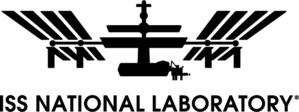
INTERNATIONAL SPACE STATION RESEARCH AND DEVELOPMENT CONFERENCE KICKS OFF MONDAY IN BOSTON
The International Space Station Research and Development Conference (ISSRDC)—the only conference dedicated exclusively to research and development on ...

ISSRDC Agenda Set: Trailblazing in Low Earth Orbit to Benefit Humanity
The 13th annual International Space Station Research and Development Conference (ISSRDC) highlights how pioneers in the space community are...
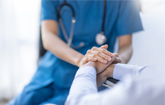
Health Care & Hospitals

STEM (Science, Tech, Engineering, Math)

Medical Pharmaceuticals
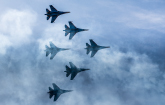
Aerospace, Defense
- Today's news
- Reviews and deals
- Climate change
- 2024 election
- Fall allergies
- Health news
- Mental health
- Sexual health
- Family health
- So mini ways
- Unapologetically
- Buying guides
Entertainment
- How to Watch
- My Portfolio
- Latest News
- Stock Market
- Biden Economy
- Stocks: Most Actives
- Stocks: Gainers
- Stocks: Losers
- Trending Tickers
- World Indices
- US Treasury Bonds
- Top Mutual Funds
- Highest Open Interest
- Highest Implied Volatility
- Stock Comparison
- Advanced Charts
- Currency Converter
- Basic Materials
- Communication Services
- Consumer Cyclical
- Consumer Defensive
- Financial Services
- Industrials
- Real Estate
- Mutual Funds
- Credit Cards
- Balance Transfer Cards
- Cash-back Cards
- Rewards Cards
- Travel Cards
- Credit Card Offers
- Best Free Checking
- Student Loans
- Personal Loans
- Car Insurance
- Mortgage Refinancing
- Mortgage Calculator
- Morning Brief
- Market Domination
- Market Domination Overtime
- Asking for a Trend
- Opening Bid
- Stocks in Translation
- Lead This Way
- Good Buy or Goodbye?
- Financial Freestyle
- Capitol Gains
- Fantasy football
- Pro Pick 'Em
- College Pick 'Em
- Fantasy baseball
- Fantasy hockey
- Fantasy basketball
- Download the app
- Daily fantasy
- Scores and schedules
- GameChannel
- World Baseball Classic
- Premier League
- CONCACAF League
- Champions League
- Motorsports
- Horse racing
- Newsletters
New on Yahoo
- Privacy Dashboard
Yahoo Finance
Cancer research in space for life on earth: five projects selected through iss national lab solicitation in partnership with nasa.
Inaugural Igniting Innovation research announcement is providing more than $7 million in funding to advance cancer research through space-based R&D
BOSTON , July 30, 2024 /PRNewswire/ -- The International Space Station (ISS) National Laboratory, in partnership with NASA's Biological and Physical Sciences (BPS) division, jointly announced the selection of five projects through the inaugural Igniting Innovation solicitation for cancer and other disease-related research and technology development on the ISS. The projects, which were announced at the annual ISS Research and Development Conference (ISSRDC) in Boston , will harness the unique microgravity environment to advance cancer research to benefit patients on Earth.
The National Cancer Institute estimates that more than 2 million cases of cancer will be diagnosed in 2024, and more than 600,000 people will die from the disease. Cancer and other disease-related research on the space station is critical not only to the ISS National Lab and NASA but also to the Biden-Harris administration and its Cancer Moonshot initiative. Through the inaugural Igniting Innovating solicitation, more than $7 million in total funding is being awarded to the selected research teams. Each team intends to fly multiple projects to the orbiting laboratory through this research announcement.
"Over the years, the space station has been a catalyst for biomedical research that has profound impacts on patient care on Earth," said Ray Lugo , chief executive officer for the Center for the Advancement of Science in Space™, manager of the ISS National Lab. "Through this inaugural Igniting Innovation research announcement, the ISS National Lab and NASA focused funding efforts to specifically target cancer through space-based research, and we look forward to working with the selected projects as they push the boundaries of research and innovation to develop more effective therapeutics for those impacted by this devastating disease."
The selected projects are listed below:
Mari Anne Snow , Eascra Biotech: This project seeks to produce cancer therapeutics in space using Janus base nanomaterials (JBNs) designed to target drug delivery to solid tumors, improving cancer treatment and reducing side effects. JBNs are formed by DNA-inspired building blocks that self-assemble. Producing JBNs in microgravity could make them more uniform, increasing both safety and efficacy. This would allow JBNs to carry larger amounts of drugs for more effective treatment. This project builds on prior space station research that Eascra and the University of Connecticut conducted with support from Axiom Space to examine the use of JBNs to treat arthritis .
Arun Sharma , Cedars-Sinai Medical Center: This project aims to grow cardiac spheroids with blood vessels from induced pluripotent stem cells in space for cardiovascular disease modeling and to test how cancer drugs affect the heart. In space, cells grow into 3D structures that are more like cell growth in the body. Blood vessels may also grow better within the spheroids in microgravity. Space-grown cardiac spheroids could provide a better disease model to study cardiovascular disease and test cancer drug toxicity. Additionally, on Northrop Grumman's 21st Commercial Resupply Services mission (NG-21) to the ISS , slated for early August, the Cedars-Sinai team intends to launch a regenerative medicine investigation supporting the in-space manufacturing of stem cells, building on prior space studies .
Catriona Jamieson , University of California, San Diego : This project seeks to use patient-derived tumor organoids to study accelerated cancer development in microgravity and identify new cancer therapeutic targets. After cancer treatment, cancer stem cells can remain in the body. These cancer cells self-renew, evade the immune system, and develop resistance, resulting in their ability to spread throughout the body. The research team will observe the rate of cancer stem cell growth in space, where cancer cells can grow more quickly, to test whether blocking a specific enzyme prevents cancer stem cell growth. Results could lead to new treatments that target evasive cancer stem cells to prevent cancer recurrence. The UCSD team has launched multiple investigations to the ISS through private astronaut missions and NASA-sponsored missions.
Cassian Yee , University of Texas MD Anderson Cancer Center: This project aims to use microgravity to better understand how T cells work in order to develop new immunotherapy treatments for patients with cancer and autoimmune diseases. T cells are a type of white blood cell that play a key role in the immune system. Previous research has shown that microgravity induces changes in the structure and function of these cells. The team will study T cells in space to better understand what controls them, and results could lead to improved immunotherapy drugs that use the immune system to fight cancer.
Shay Soker , Wake Forest Institute for Regenerative Medicine (WFIRM): This project seeks to use organoids created from cells recovered from colorectal cancer patients to see if chemotherapy works better in space, offering insight into improved chemotherapies. Microgravity causes changes in cancer cells that may make them more sensitive to chemotherapy. The team will study how spaceflight changes gene expression in the organoids to identify targets for new, more effective chemotherapy drugs. Results from this project could also lead to personalized cancer treatment. WFIRM is actively involved in research on the space station and will launch an investigation on NG-21 analyzing the behavior of engineered liver constructs, which could lead to in-space production of tissues for organ transplants on Earth.
All five research teams intend to work with ISS National Lab Commercial Service Provider Axiom Space, together with BioServe Space Technologies, who will provide engineering and logistical support to prepare the projects for spaceflight and successful operations on station.
"We are thrilled to support this critical in-space cancer research," said Lisa Carnell , director of NASA's Biological and Physical Sciences (BPS) division. "The unique microgravity environment of space offers incredible opportunities for researchers to study the effects of spaceflight stressors on human tissue. This research could be used not only to help protect crew health on long-duration missions but also to contribute to initiatives like the Cancer Moonshot and improved treatment options for patients here on Earth."
The final award of funding is contingent upon acceptance of legal terms and conditions between the recipients, the Center for the Advancement of Science in Space™, which manages the ISS National Lab, and NASA's BPS division.
The ISS National Lab and NASA plan to announce the 2024 Igniting Innovation solicitation in August. This research announcement is focused on leveraging the space environment to address challenges that hinder progress in preventing, diagnosing, and treating the most challenging diseases of our time, such as cancer, cardiovascular disease, and neurodegenerative disease.
To download a high-resolution image for this release, click here .
About the International Space Station (ISS) National Laboratory: The International Space Station (ISS) is a one-of-a-kind laboratory that enables research and technology development not possible on Earth. As a public service enterprise, the ISS National Laboratory ® allows researchers to leverage this multiuser facility to improve quality of life on Earth, mature space-based business models, advance science literacy in the future workforce, and expand a sustainable and scalable market in low Earth orbit. Through this orbiting national laboratory, research resources on the ISS are available to support non-NASA science, technology, and education initiatives from U.S. government agencies, academic institutions, and the private sector. The Center for the Advancement of Science in Space™ (CASIS™) manages the ISS National Lab, under Cooperative Agreement with NASA, facilitating access to its permanent microgravity research environment, a powerful vantage point in low Earth orbit, and the extreme and varied conditions of space. To learn more about the ISS National Lab, visit our website .
As a 501(c)(3) nonprofit organization, CASIS accepts corporate and individual donations to help advance science in space for the benefit of humanity. For more information, visit our donations page .
| Patrick O'Neill |
904-806-0035 | |
|
| |
Managed by the Center for the Advancement of Science in Space, Inc. (CASIS) | |
6905 N. Wickham Rd., Suite 500, Melbourne, FL 32940 • 321.253.5101 • www.ISSNationalLab.org |
View original content to download multimedia: https://www.prnewswire.com/news-releases/cancer-research-in-space-for-life-on-earth-five-projects-selected-through-iss-national-lab-solicitation-in-partnership-with-nasa-302210134.html
SOURCE International Space Station National Lab
Enter the characters you see below
Sorry, we just need to make sure you're not a robot. For best results, please make sure your browser is accepting cookies.
Type the characters you see in this image:


Suggested Searches
- Climate Change
- Expedition 64
- Mars perseverance
- SpaceX Crew-2
- International Space Station
- View All Topics A-Z
Humans in Space
Earth & climate, the solar system, the universe, aeronautics, learning resources, news & events.
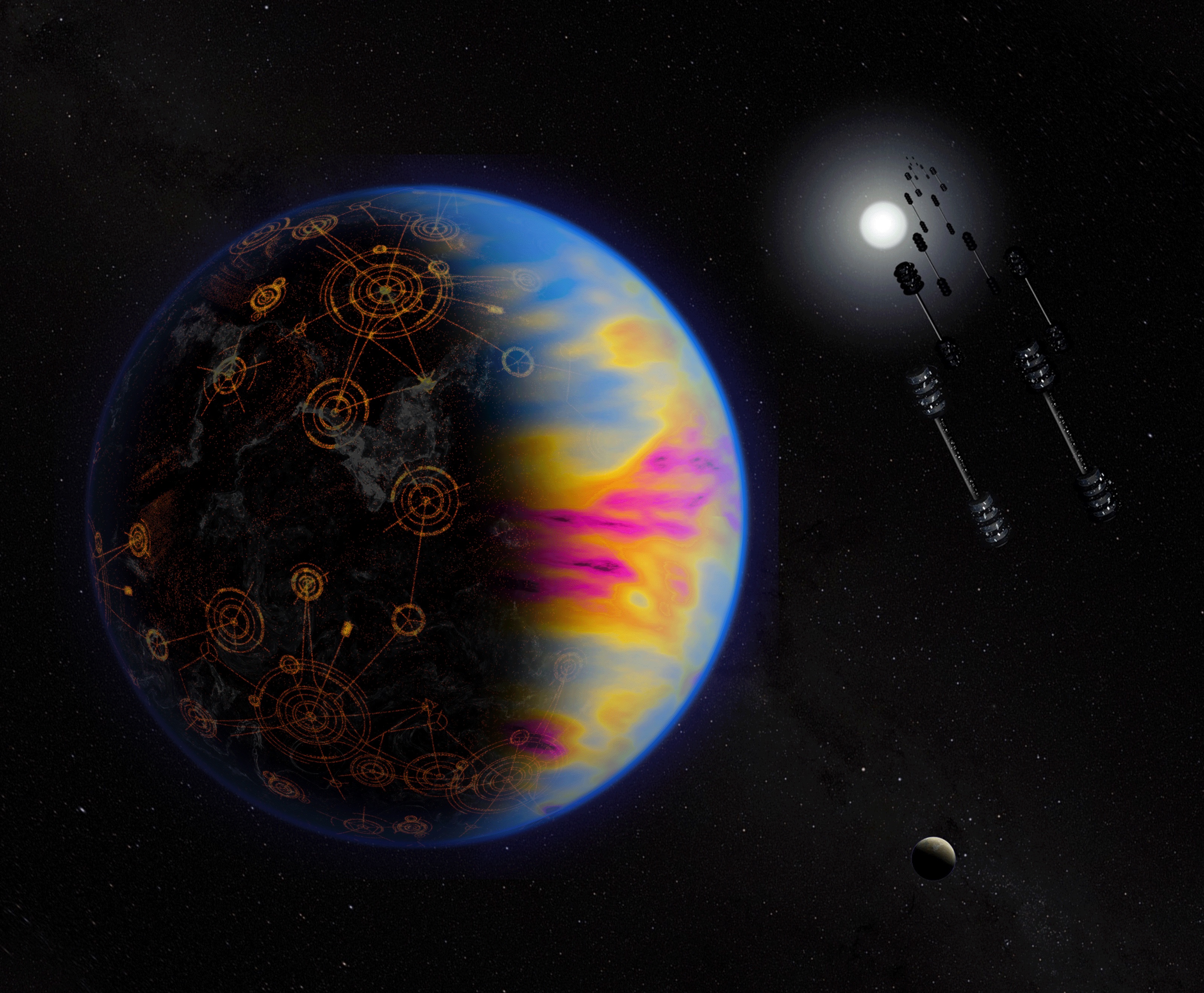
NASA Scientists on Why We Might Not Spot Solar Panel Technosignatures
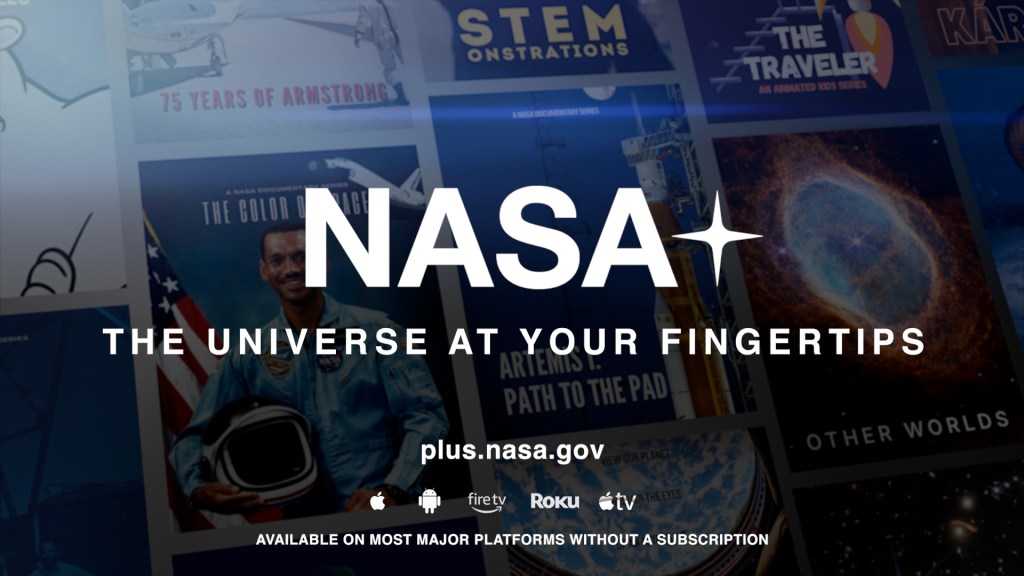
NASA Embraces Streaming Service to Reach, Inspire Artemis Generation
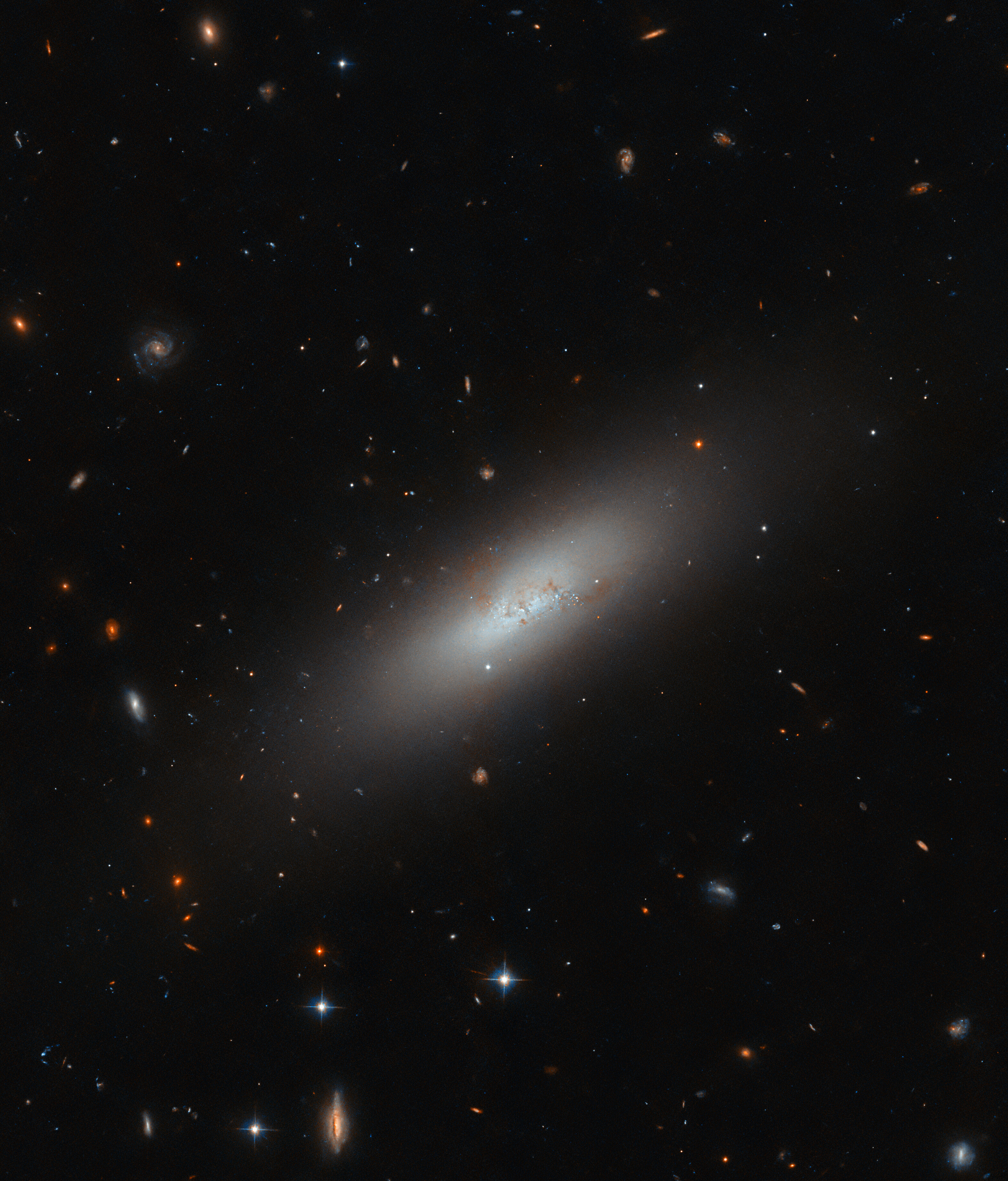
Hubble Spies a Diminutive Galaxy
- Search All NASA Missions
- A to Z List of Missions
- Upcoming Launches and Landings
- Spaceships and Rockets
- Communicating with Missions
- James Webb Space Telescope
- Hubble Space Telescope
- Why Go to Space
- Commercial Space
- Destinations
- Living in Space
- Explore Earth Science
- Earth, Our Planet
- Earth Science in Action
- Earth Multimedia
- Earth Science Researchers
- Pluto & Dwarf Planets
- Asteroids, Comets & Meteors
- The Kuiper Belt
- The Oort Cloud
- Skywatching
- The Search for Life in the Universe
- Black Holes
- The Big Bang
- Dark Energy & Dark Matter
- Earth Science
- Planetary Science
- Astrophysics & Space Science
- The Sun & Heliophysics
- Biological & Physical Sciences
- Lunar Science
- Citizen Science
- Astromaterials
- Aeronautics Research
- Human Space Travel Research
- Science in the Air
- NASA Aircraft
- Flight Innovation
- Supersonic Flight
- Air Traffic Solutions
- Green Aviation Tech
- Drones & You
- Technology Transfer & Spinoffs
- Space Travel Technology
- Technology Living in Space
- Manufacturing and Materials
- Science Instruments
- For Kids and Students
- For Educators
- For Colleges and Universities
- For Professionals
- Science for Everyone
- Requests for Exhibits, Artifacts, or Speakers
- STEM Engagement at NASA
- NASA's Impacts
- Centers and Facilities
- Directorates
- Organizations
- People of NASA
- Internships
- Our History
- Doing Business with NASA
- Get Involved
NASA en Español
- Aeronáutica
- Ciencias Terrestres
- Sistema Solar
- All NASA News
- Video Series on NASA+
- Newsletters
- Social Media
- Media Resources
- Upcoming Launches & Landings
- Virtual Events
- Sounds and Ringtones
- Interactives
- STEM Multimedia
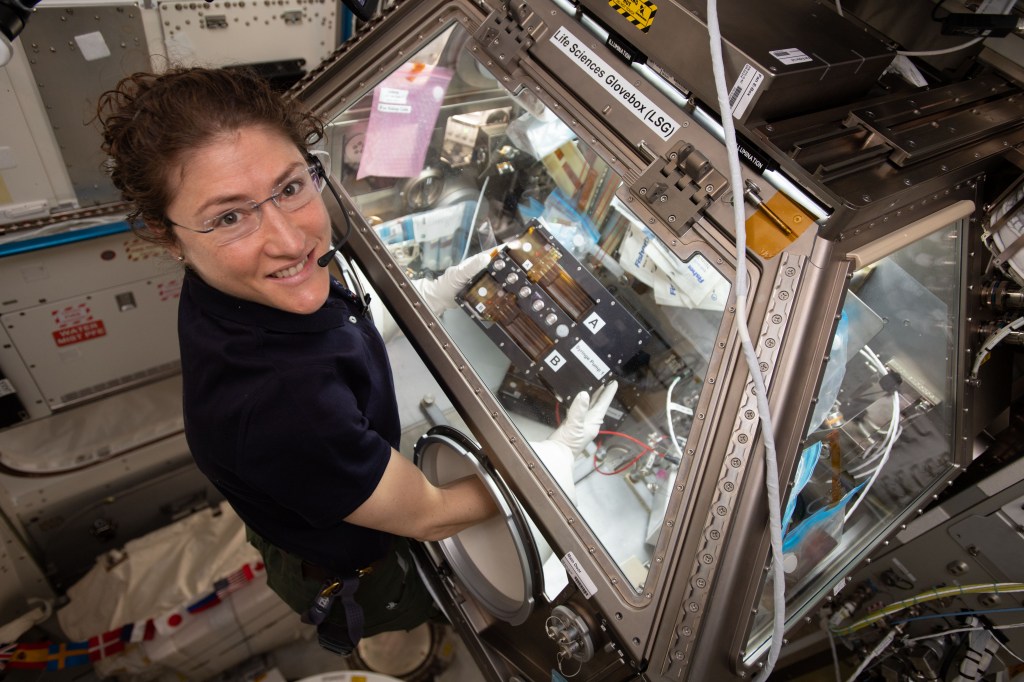
Station Science Top News: August 2, 2024
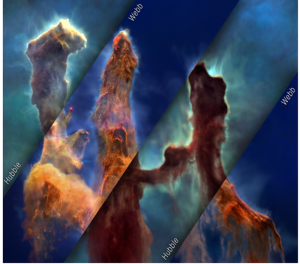
AstroViz: Iconic Pillars of Creation Star in NASA’s New 3D Visualization
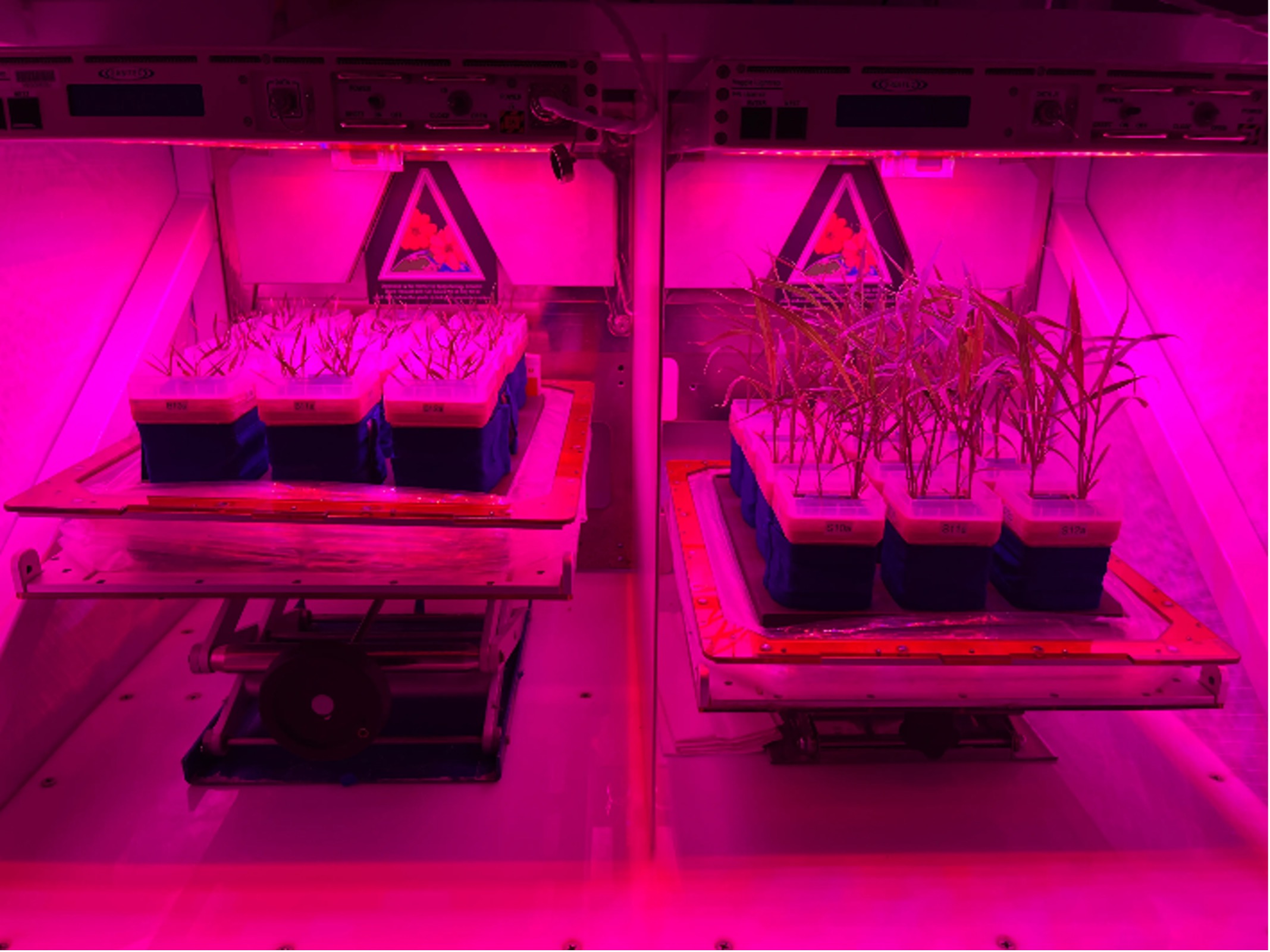
NASA Sends More Science to Space, More Strides for Future Exploration
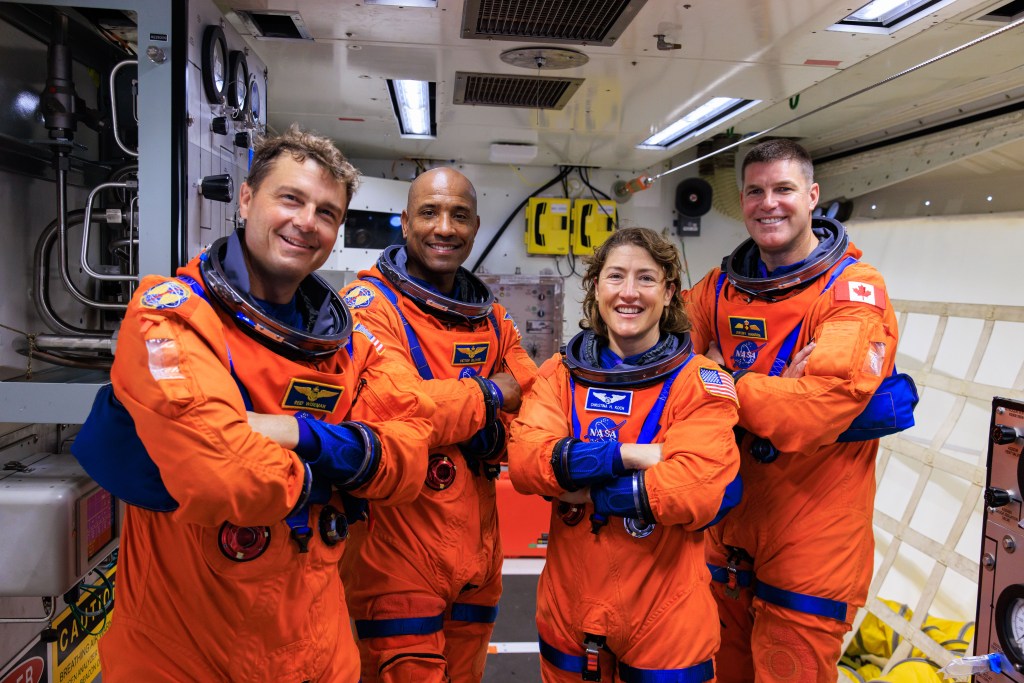
What’s New With the Artemis II Crew
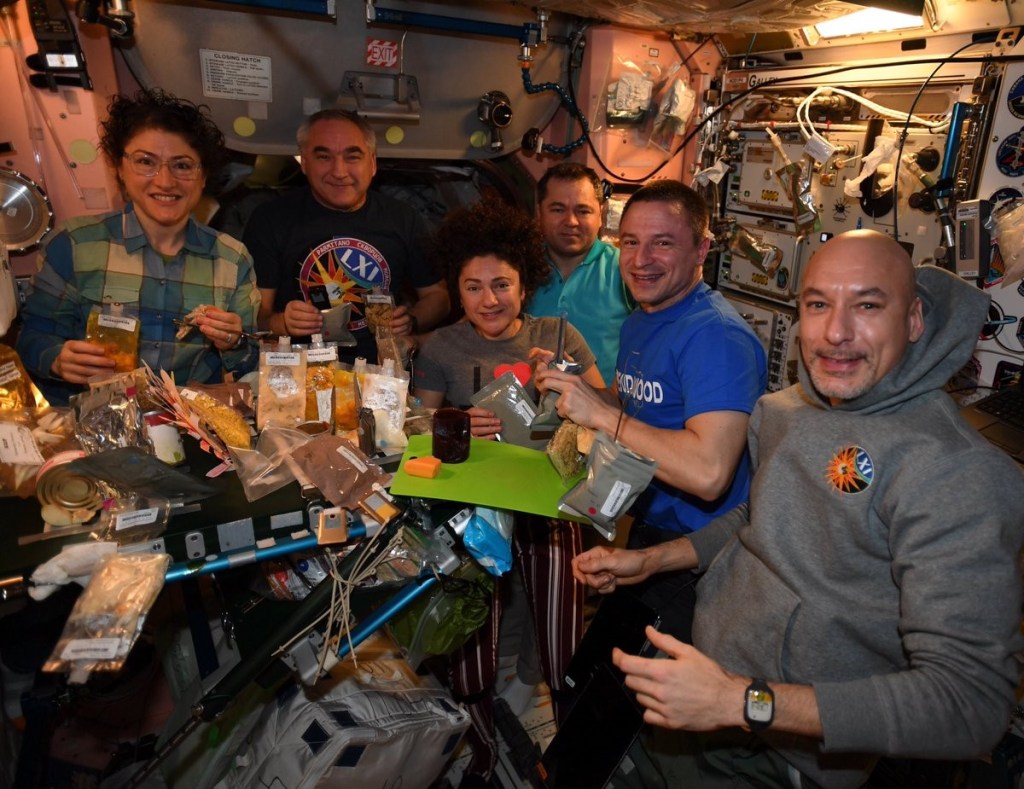
Food in Space
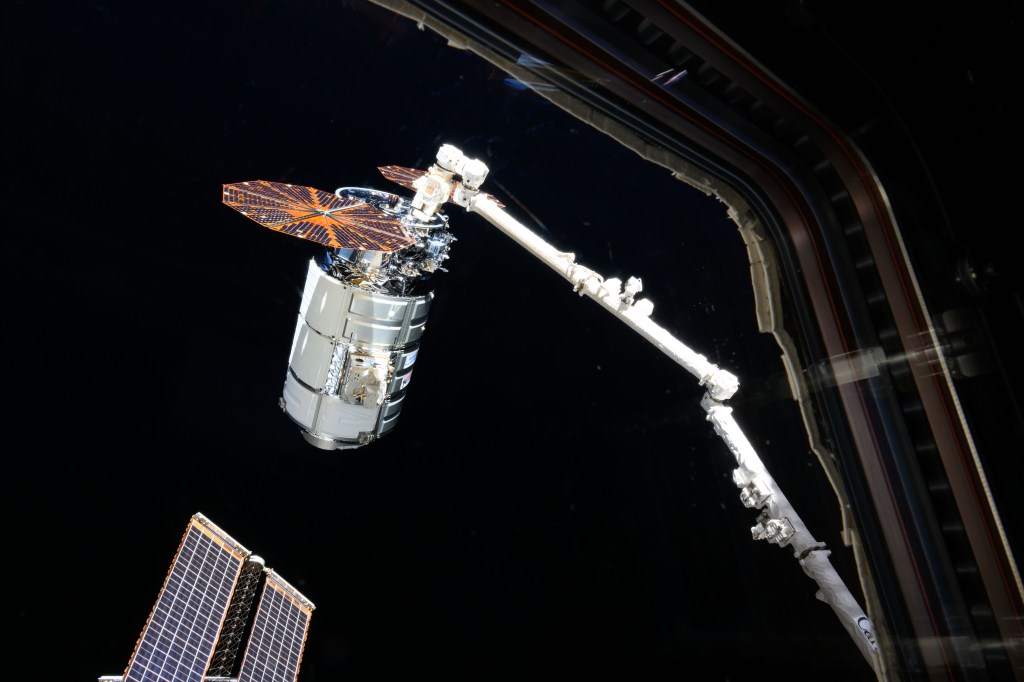
NASA Offers Virtual Activities for 21st Northrop Grumman Resupply Mission
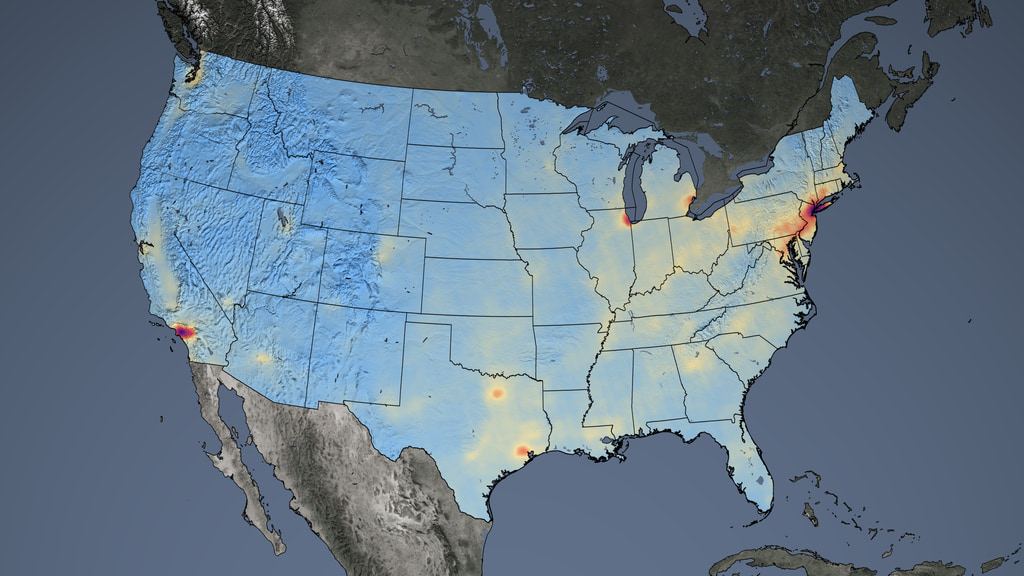
NASA, EPA Tackle NO2 Air Pollution in Overburdened Communities
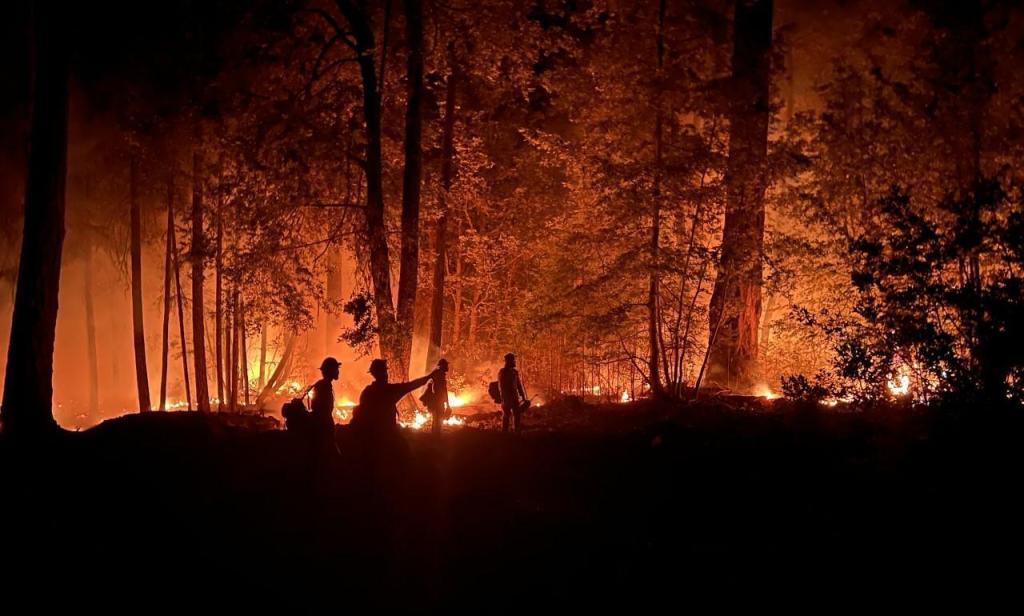
Improving Firefighter Safety with STRATO
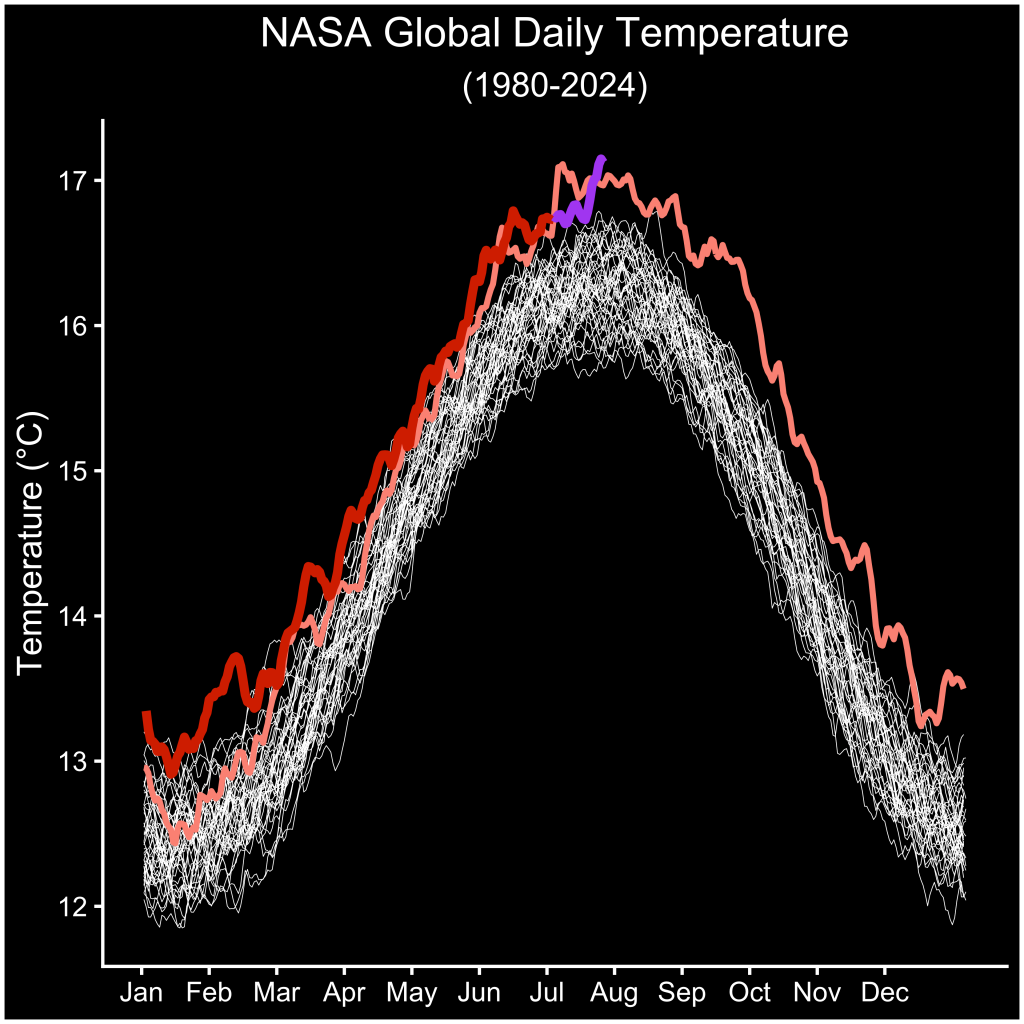
NASA Data Shows July 22 Was Earth’s Hottest Day on Record
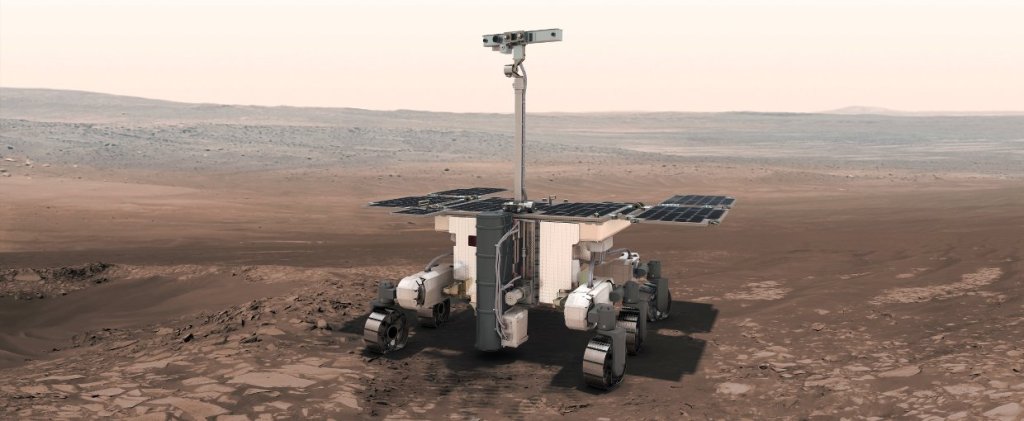
NASA Trains Machine Learning Algorithm for Mars Sample Analysis

Amendment 37: DRAFT F.11 Stand-Alone Landing Site-Agnostic Payloads and Research Investigations on the Surface of the Moon released for community comment.
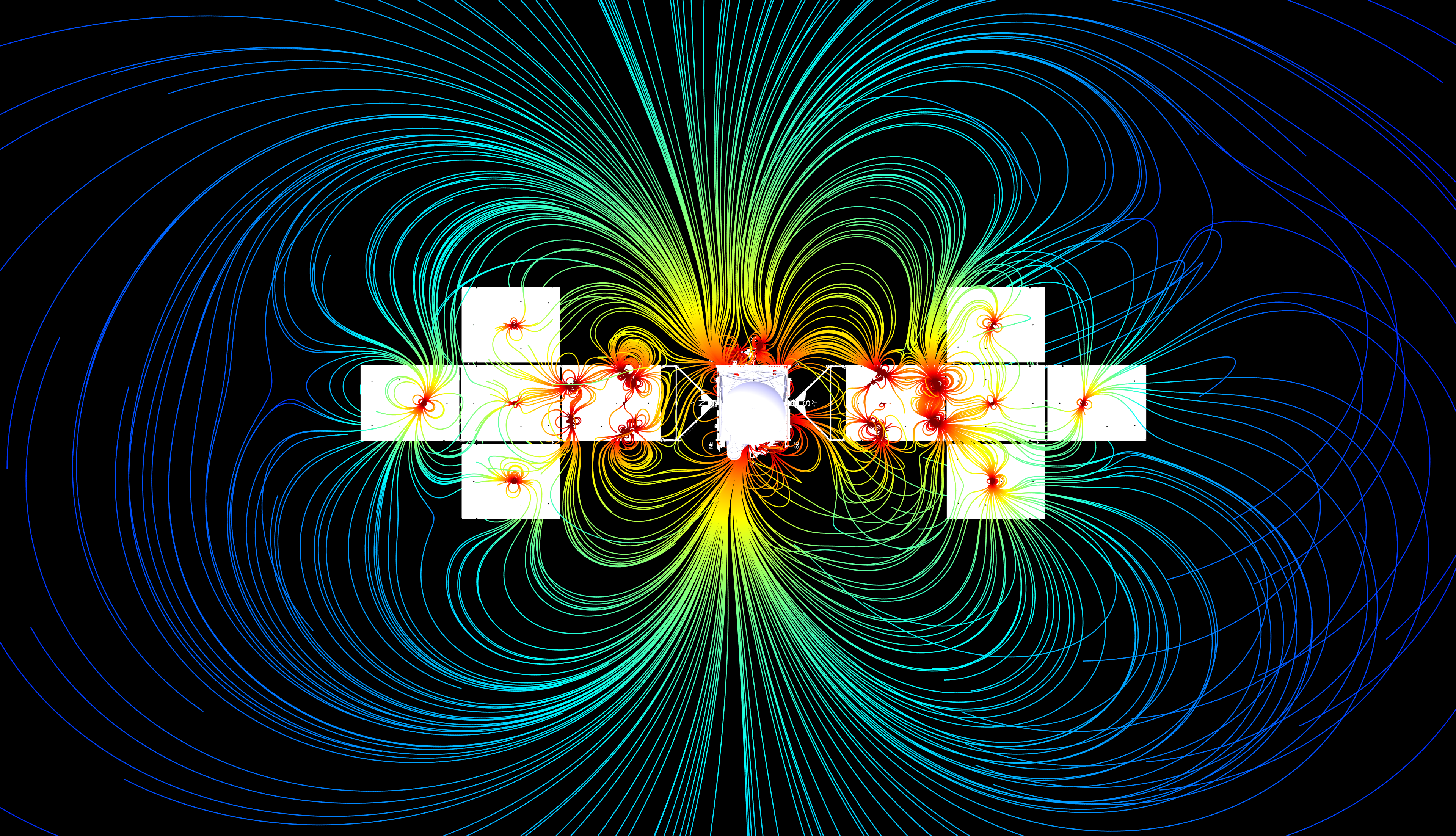
Quantum Scale Sensors used to Measure Planetary Scale Magnetic Fields
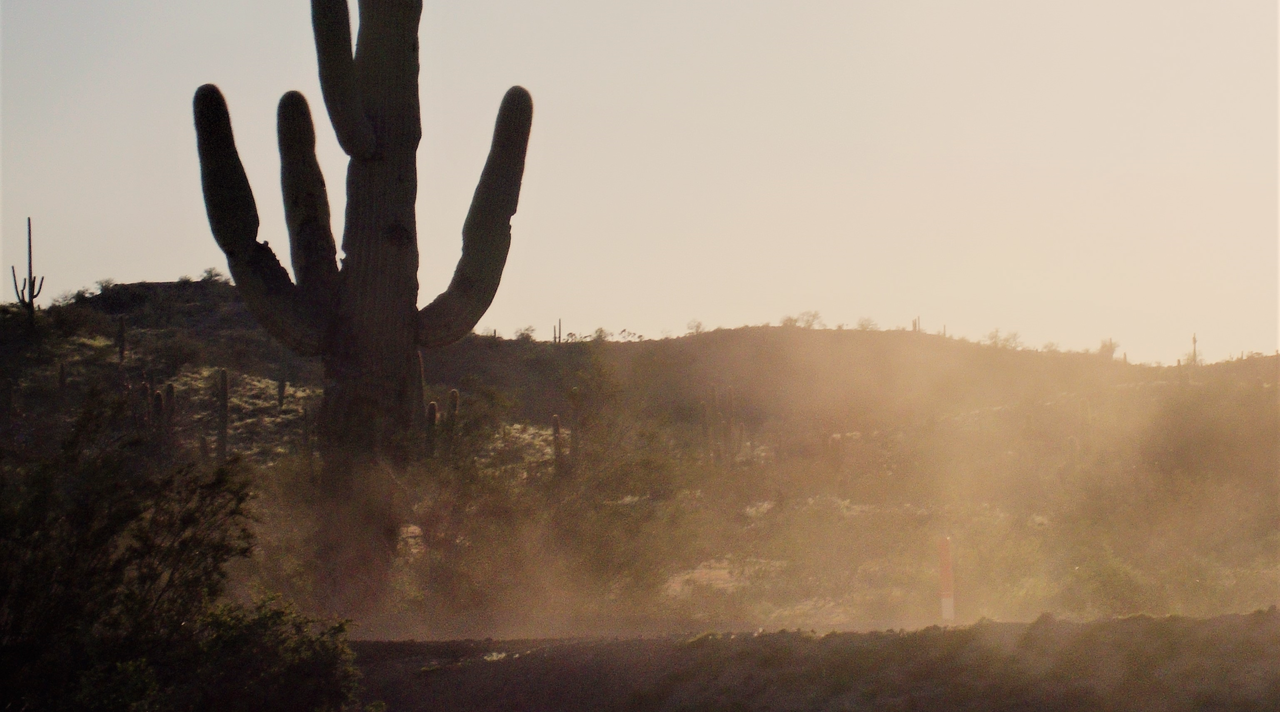
Amendment 38: A.43 Earth Action: Health and Air Quality Due Date Delay.
‘current’ events: nasa and usgs find a new way to measure river flows.
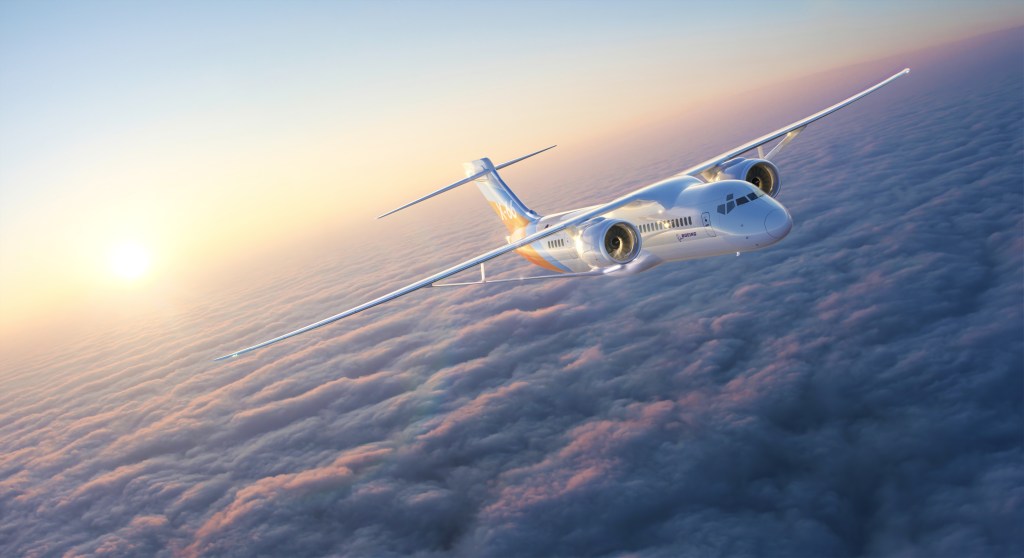
NASA Furthers Aeronautical Innovation Using Model-Based Systems

NASA Ames to Host Supercomputing Resources for UC Berkeley Researchers

Former Space Communications, Navigation Interns Pioneer NASA’s Future

How Do I Navigate NASA Learning Resources and Opportunities?

NASA Johnson Dedicates Dorothy Vaughan Center to Women of Apollo

NASA’s First-Ever Quantum Memory Made at Glenn Research Center

A Picture-Perfect Portrait: Eliza Hoffman’s Take on Dorothy Vaughan
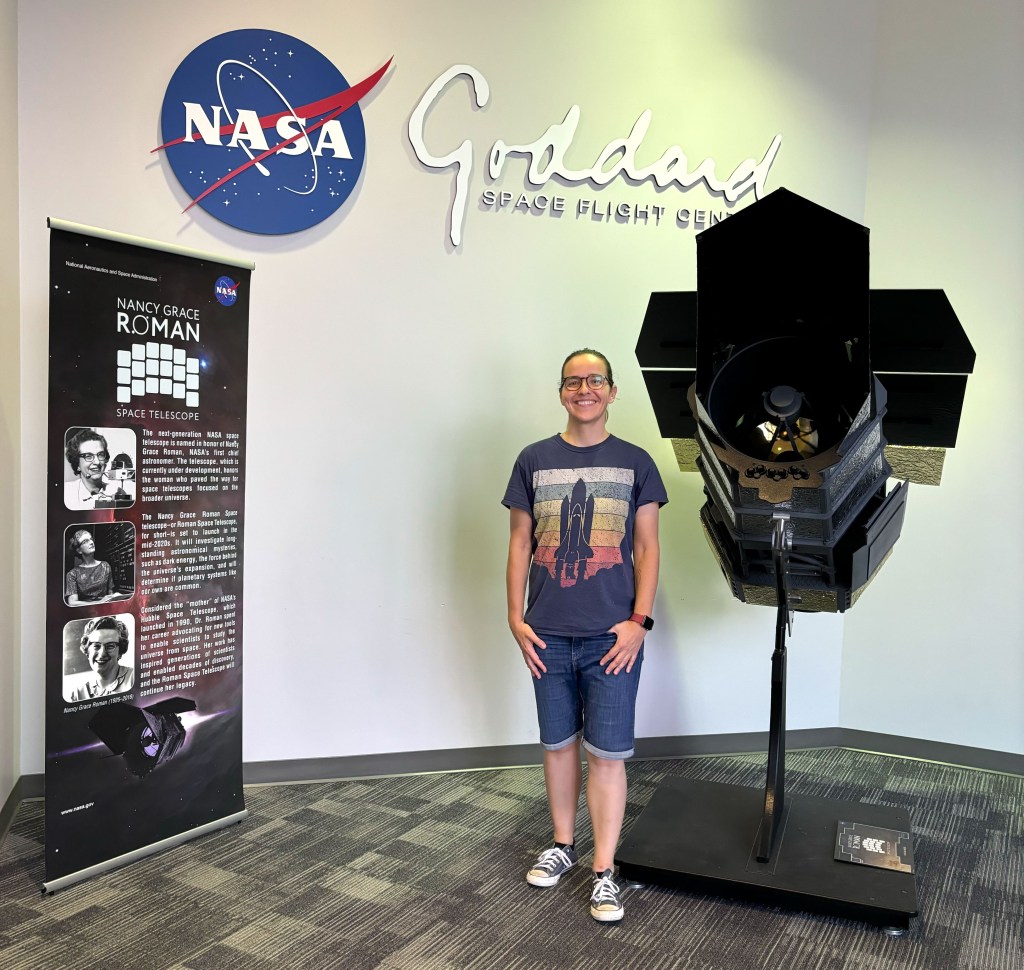
There Are No Imaginary Boundaries for Dr. Ariadna Farrés-Basiana

Astronauta de la NASA Frank Rubio

Diez maneras en que los estudiantes pueden prepararse para ser astronautas
Nasa to highlight 13th space station research, development conference.
Jessica Taveau
Nasa headquarters.
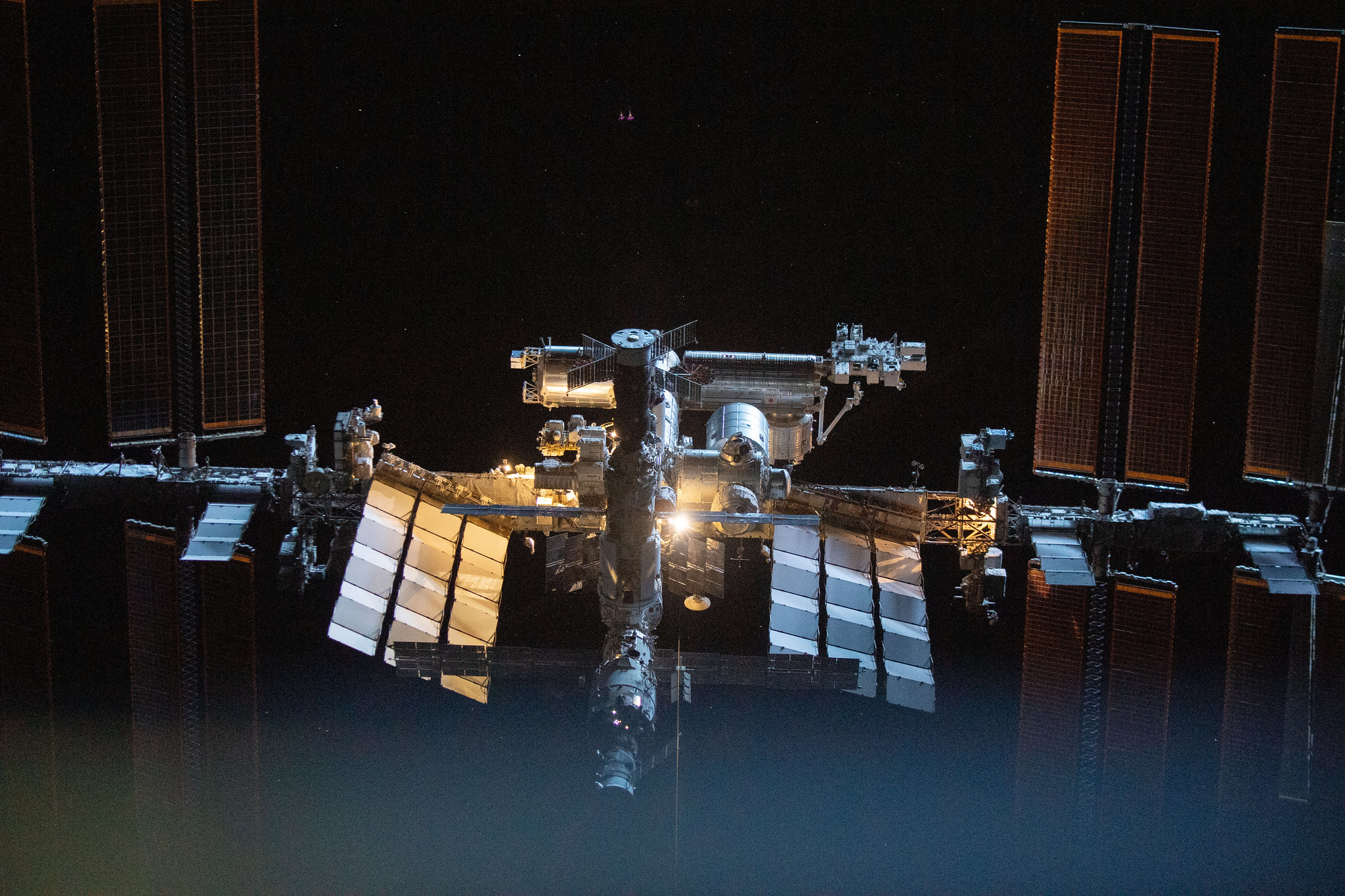
Editor’s Note: This med ia advisory was updated on July 29, 2024 to reflect the updated times for the Low Earth Orbit panel on Wednesday, July 31 and the keynote address on Thursday, Aug. 1.
NASA will broadcast groundbreaking discoveries, benefits for humanity, and how the agency and its commercial and international partners are maximizing research and development in orbit from the 13th annual International Space Station Research and Development Conference.
The conference runs Monday through Thursday, Aug. 1, in Boston. The full conference agenda is available online . NASA will stream live coverage of select panels on NASA Television, the NASA app , YouTube , and the agency’s website. Learn how to stream NASA TV through a variety of platforms, including social media.
NASA’s coverage is as follows (all times Eastern):
Tuesday, July 30
9 a.m. – Igniting Innovation Keynote with the following participants:
- Diana Ly, manager, deputy director, Biological and Physical Sciences, NASA Headquarters
- Michael Roberts, chief scientific officer, International Space Station National Laboratory
9:35 a.m. – NASA’s Expedition 71 astronauts will discuss research from aboard the orbiting space station laboratory with the following participants:
- Mike Barratt
- Matt Dominick
- Jeanette Epps
- Tracy C. Dyson
Wednesday, July 31
12 p.m. – Keynote address with the following participant:
- NASA Associate Administrator Jim Free
1:45 p.m. – Lightning: The Power of Science in Low Earth Orbit talk with the following participant:
- Nicky Fox, associate administrator, Science Mission Directorate, NASA Headquarters
2:05 p.m. – Low Earth Orbit Research Continuity panel with the following participants:
- Robyn Gatens, director, International Space Station Program, NASA Headquarters
- Kirt Costello, utilization manager, Low Earth Orbit Development Program, NASA Johnson
- Ryan Prouty, manager, International Space Station Research Integration Office, NASA Johnson
Thursday, Aug. 1
8:40 a.m. – International Space Station International Partners panel with the following participants:
- Dana Weigel, manager, International Space Station Program, NASA Johnson
- Dr. Masaki Shirakawa, director, Japanese Experiment Module Utilization Center, JAXA (Japan Aerospace Exploration Agency)
- Fabio Caramelli, manager, Space Rider System Payload and Exploitation, ESA (European Space Agency)
- Mathieu Caron, director, Astronauts, Life Sciences and Space Medicine, CSA (Canadian Space Agency)
- Hazzaa Al Monsoori, chief, Astronaut Office, United Arab Emirates
- Luca Di Fino, utilization manager, International Space Station Program, Agenzia Spaziale Italiana
10:15 a.m. – Accessibility to Low Earth Orbit panel with the following participants:
- Brittany Brown, director, digital communications, Office of Communications, NASA Headquarters
- Jessica Gagen, scientist and educator, Miss United Kingdom 2024
- Eric Ingram, chairman and chief strategy officer, SCOUT Space, Inc.
- John Shoffner, founder, Perseid Foundation
12:30 p.m. – Keynote address with the following participant:
- Steve Bowen, NASA astronaut
The International Space Station Research and Development Conference is hosted by the Center for the Advancement of Science in Space and the American Astronautical Society, in cooperation with NASA, and brings together leaders from industry, academia, and government.
With more than 23 years of continuously crewed operations, the space station is a unique scientific platform where crew members conduct experiments across multiple disciplines of research, including Earth and space science, biology, human physiology, physical sciences, and technology demonstrations not possible on Earth. Crews living aboard the station have executed more than 3,300 experiments in microgravity for thousands of researchers on Earth. The space station also supports space commerce, from commercial crew and cargo partnerships to commercial research and national lab research. Data collected from these activities helps set standards for future commercial stations.
Get updates about the science conducted aboard the space station on X at @ISS_Research .
Learn more about conducting research in microgravity at:
https://www.nasa.gov/iss-science
Joshua Finch / Jimi Russell Headquarters, Washington 202-358-1100 [email protected] / [email protected]
Sandra Jones Johnson Space Center, Houston 281-483-5111 [email protected]
Patrick O’Neill International Space Station National Laboratory 904-806-0035 [email protected]
Related Terms
- International Space Station (ISS)
- International Space Station Division
- ISS Research
NASA just scored a badly needed win: The best potential evidence of alien life yet
- NASA's Perseverance rover has found potential evidence of ancient microbial life on Mars .
- Scientists must bring the rock to Earth for further study, but three key features make it promising.
- The discovery is a crucial win for NASA after a series of budget cuts and mission setbacks.

NASA has snagged a chunk of rock on Mars that could someday prove to be the first clear evidence of alien life .
To be clear, NASA is not declaring that it's discovered Martian life. Rather, its Perseverance rover has drilled a sample from a rock with attributes that could have come from ancient microbial activity, the agency announced Thursday.
To confirm their suspicions, scientists would need to bring the rock sample to Earth and study it in more detail.
"This is exactly the kind of sample that we wanted to find," Katie Stack Morgan, a lead scientist on the Perseverance mission , told Business Insider.
3 key features could point to alien life
The rock, nicknamed Cheyava Falls, has three critical features:
- First, white veins of calcium sulfate are clear evidence that water once ran through it.
- Second, the rock tested positive for organic compounds, which are the carbon-based building blocks of life, as we know it.
- Third, it's speckled with tiny "leopard spots" that point to chemical reactions that are associated with microbial life here on Earth.
However, both the organic material and the leopard spots could have come from non-biological processes. That's why scientists need to study the sample more closely on Earth to know for sure.
The rover has reached the limit of what it can learn about the rock.
"We're not saying there's life on Mars, but we're seeing something that is compelling as a potential biosignature," Stack Morgan said.
A biosignature is any feature that points to the presence of life .
Related stories
"This is a very significant discovery," she added.
It's a much-needed win for the space agency. In recent months, NASA has taken hit after hit from budget limitations and technical errors across missions.
NASA needs this win
Earlier this year, the agency's first attempt to return to the moon since 1972 failed. The NASA-funded Peregrine moon mission, by the company Astrobotic suffered a fuel leak shortly after launch, forcing it to return to Earth and burn up in the atmosphere. (The next attempt, a mission by the company Intuitive Machines , also funded by NASA, successfully landed on the moon.)
Then, new budgeting decisions came down. NASA's budget proposal for 2025 effectively defunds the Chandra X-ray Observatory , which is still a highly productive and functional mission.
And just last week, NASA officials announced they were scrapping the VIPER moon rover that the agency has already spent $450 million to build. NASA plans to disassemble it and reuse some of the parts for future moon missions.
Meanwhile, two astronauts have been stuck on the International Space Station for 51 days because the NASA-funded Boeing spaceship that carried them there is leaking helium and having thruster malfunctions.
Even Perseverance wasn't spared. In April, NASA announced it was canceling its $11 billion plan to send a follow-up mission, called Mars Sample Return, to collect the rover's tubes of Martian rock and carry them back to Earth. That was the plan that could've brought scientists the Cheyava Falls rock sample.
Instead, NASA is asking companies to step in and propose their own cheaper, faster versions of the mission.
The Cheyava Falls rock especially needs the extra studying.
"This rock is also one of the most complex rocks we've seen on the surface of Mars. There is a lot going on in this rock," Stack Morgan said.
I s it aliens? Check the CoLD scale
For now, this discovery is just a "step one" on the seven-step "confidence of life detection" (CoLD) scale.
The CoLD scale is a rough rating of scientific confidence in any potential alien-life discovery.
"We've taken us up to the start of that scale, and I think that's what the rover was sent to Mars to do," Stack Morgan said.
A possible biosignature can climb to higher levels of confidence as evidence builds. For example, if scientists can confirm that known non-biological processes didn't create the leopard spots, the Cheyava Falls rock might ascend to step two or three.
But they need to get the sample to Earth first. And NASA needs to figure out how to do that.
"We're hoping that our most recent sample can play into the conversation about whether this effort is worth it," Stack Morgan said. "And we believe that it is."
Watch: This asteroid dirt might explain the origins of life on Earth
- Main content
share this!
August 2, 2024
This article has been reviewed according to Science X's editorial process and policies . Editors have highlighted the following attributes while ensuring the content's credibility:
fact-checked
trusted source
Experiment on photosynthesis is heading to the space station to explore effects of microgravity
by Tom Rickey, Pacific Northwest National Laboratory
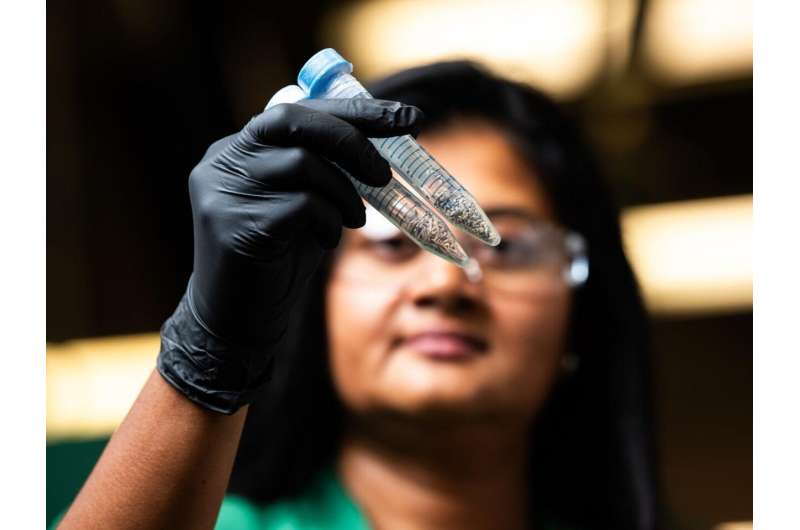
An experiment aimed at learning more about how plants grow in space will be aboard a National Aeronautics and Space Administration launch in early August from the Cape Canaveral Space Force Station in Florida.
A Northrop Grumman Cygnus spacecraft perched atop a SpaceX Falcon 9 rocket will carry the plants to the orbiting laboratory, where astronauts will tend to them before the plants are returned to Earth.
The experiment created by scientists at the Department of Energy's Pacific Northwest National Laboratory will look at how two different types of grass grow on the space station. A PNNL team led by biologist Pubudu Handakumbura designed the experiment and will compare the results from space to identical plants being grown at the Kennedy Space Center.
The study focuses on photosynthesis—how plants take in light and then use it to grow, converting carbon dioxide to sugars and oxygen in the process. The two grass types under study, Brachypodium distachyon and Setaria viridis, use different carbon dioxide -concentrating mechanisms. Handakumbura's team will compare the two methods in a microgravity environment.
While most plants on Earth use a carbon-concentrating mechanism known as C3, there is some evidence that a method known as C4 holds more promise for plant growth in space.
"How will the plants respond in a microgravity environment?" said Handakumbura. "Plants naturally send their roots downward due to gravity. But how will they grow in microgravity? This is important for future deep space exploration, for growing food and supporting life."
The team will monitor three identical sets of plants as they grow for 32 days—two sets at Kennedy Space Center and one set on the space station. Altogether, the experiment includes 288 plants.
On the space station , astronauts will tend to the plants and record how efficiently they are carrying out photosynthesis. After the plants are returned to Earth on a subsequent mission, they will be sent to PNNL, where Handakumbura's team will spend several months analyzing the molecular activity that took place.
The experiments measuring proteins, metabolites and other molecules will be done at the Environmental Molecular Sciences Laboratory, a DOE Office of Science user facility.
Handakumbura's experiment is named Advanced Plant Experiment-09 or APEX-09 . PNNL colleagues Chaevien Clendinen, Summer Duckworth, Kim Hixson, Madeline Southworth and Kylee Tate are also working on the project.
Handakumbura will be on hand to watch the experiment, three years in the making, head into space as part of Northrop Grumman's 21st Commercial Resupply Services Mission.
"I look forward to the knowledge we will uncover from the team-driven science we are conducting with APEX 09," said Handakumbura. "And I am excited to contribute to the foundational research that will shape future plant system designs."
Provided by Pacific Northwest National Laboratory
Explore further
Feedback to editors

Advanced chelators offer efficient and eco-friendly rare earth element recovery
50 minutes ago

'Baby talk:' Decoding how children's vocal and cognitive cues sway adults

Calculating faster: Coupling AI with fundamental physics

Hunt for herbicide solution in snap bean reveals master switch for stress resistance

Understanding the forces that regulate crystallization by particle attachment

Fossil hunter discovers new species of 210-million-year-old lungfish

The shape of molecules to come: A Q&A on designing DNA nanostructures for biomedical applications

Researchers identify gene responsible for marsupial fur color

Heating for fusion: Why toast plasma when you can microwave it

Antarctic survey of plant life to aid conservation efforts
Relevant physicsforums posts, n-body inputs from keplerian orbits.
3 hours ago
Asteroid Dimorphous easier to move because it's made up of rubble?
6 hours ago
Optimizing Exposure Times: Balancing Efficiency and Image Quality
16 hours ago
Temperature difference between Venus and Mercury
21 hours ago
Solar Activity and Space Weather Update thread
Aug 4, 2024
Comet A117uUD Goes Interstellar after Encountering Saturn in 2022
Aug 2, 2024
More from Astronomy and Astrophysics
Related Stories

Surviving space: Extreme plant adaptation
Nov 1, 2022

Zero gravity plant growth experiments delivered to space station
Dec 18, 2017

Atmospheric Waves Experiment launches to space station
Nov 14, 2023

A matter of gravity—understanding how plants grow in space
Jul 4, 2018

Image: Cygnus flies to the International Space Station
Feb 1, 2024

A little piece of Washington state blasted into space this week
Jul 15, 2022
Recommended for you

One year on 'Mars': Inside NASA's ultra-realistic isolation study
Jul 31, 2024

Two meteor showers will flash across the sky around the same time in late July
Jul 29, 2024

NASA, JAXA bounce laser beam between moon's surface and lunar orbit

A cave discovered on the moon opens up new opportunities for settlement by humans
Jul 27, 2024

Spacecraft to swing by Earth, moon on path to Jupiter

NASA says no return date yet for astronauts and troubled Boeing capsule at space station
Jul 25, 2024
Let us know if there is a problem with our content
Use this form if you have come across a typo, inaccuracy or would like to send an edit request for the content on this page. For general inquiries, please use our contact form . For general feedback, use the public comments section below (please adhere to guidelines ).
Please select the most appropriate category to facilitate processing of your request
Thank you for taking time to provide your feedback to the editors.
Your feedback is important to us. However, we do not guarantee individual replies due to the high volume of messages.
E-mail the story
Your email address is used only to let the recipient know who sent the email. Neither your address nor the recipient's address will be used for any other purpose. The information you enter will appear in your e-mail message and is not retained by Phys.org in any form.
Newsletter sign up
Get weekly and/or daily updates delivered to your inbox. You can unsubscribe at any time and we'll never share your details to third parties.
More information Privacy policy
Donate and enjoy an ad-free experience
We keep our content available to everyone. Consider supporting Science X's mission by getting a premium account.
E-mail newsletter

IMAGES
COMMENTS
A peer-reviewed journal that publishes research on the effects of space environment on life sciences, including astrobiology, prebiotic chemistry, and human health. Find the latest articles, news, calls for papers, and special issues on topics such as radiation, food, water, and planetary protection.
Online archive. Life Sciences in Space Research is a quarterly peer-reviewed scientific journal covering astrobiology, origins of life, life in extreme environments, habitability, effects of spaceflight on the human body, radiation risks, and other aspects of life sciences relevant in space research. It was established in 2014 and is published ...
Browse the latest volumes and articles of Life Sciences in Space Research, a peer-reviewed journal covering biology and medicine in space. Find out the topics, authors, and publication dates of each issue.
Life Sciences in Space Research is published by Elsevier Science Ltd. on behalf of COSPAR and is a copyrighted publication. COSPAR grants permission for individuals to make single copies for personal use in research, study, or teaching, and to use figures, tables, and short quotes from the Journal for republication in books and journals.
Geographical distribution of space life science research. Paper count is colored on a log scale in red for all countries available in the bibliometric analysis. Scattered blue dots are marked for ...
A peer-reviewed journal that publishes original and review articles on the biological effects of space environment. It covers topics such as astrobiology, space radiation, space flight, ecology, and habitability in the solar system and beyond.
Life Sciences in Space Research features an editorial team of top scientists in the space radiation field and guarantees a fast turnaround time from submission to editorial decision. Manuscripts in the following areas are considered: Astrobiology; Prebiotic chemistry and origin of life; Life in extreme environments; Habitability in the solar ...
Corrigendum to 'Review of research into bioregenerative life support system(s) which can support humans living in space' [Life Sciences in Space Research 31 (2021) 113-120]
A substantial amount of life-sciences research has been performed in space since the beginning of human spaceflight. Investigations into bone loss, for example, are well known; other areas, such ...
The library is co-funded by NASA's Biological and Physical Sciences (BPS) division and Kennedy Space Center (KSC) and is managed by the Utilization and Life Sciences Office (UB) within the KSC's Exploration Research & Technology program while the publications themselves exist in, and come from, the public domain and are funded by their respective institutions.
Research on physical science and life sciences in space allows humans to both expand their knowledge of space and enhance their economic vitality on Earth. A series of physical science experiments testing micro gravity properties in space are driving global advances in science and technology. Through a number of innovative biological experiments, NASA is also […]
Life Sciences. Space Life Sciences cover both space health sciences and space biology. There are four main obstacles to life in space: variable gravity, space radiation, isolation, and confinement. Mission: Advance human exploration into deep space, harvesting unique knowledge that can improve life and health in space and on Earth.
Life Sciences in Space Research. Open Access Articles. ISSN: 2214-5524. Life Sciences in Space Research. Submit your Paper View Articles. Guide for authors. Track your paper. Track accepted paper; Order journal. Open Access Articles. Advances in planetary sustainability. André Galli, Andreas Losch Open Access.
This last volume of the SpringerBriefs in Space Life Sciences series is setup in 5 main parts. The 1st part shortly summarizes the history of life science research in space from the late 40s until today with focus on Europe and Germany, followed by a part on describing flight opportunities including the Space Shuttle/Spacelab system and the International Space Station ISS; in the 3 rd part it ...
Final citation details, e.g. volume and/or issue number, publication year and page numbers, still need to be added and the text might change before final publication. Read the latest articles of Life Sciences in Space Research at ScienceDirect.com, Elsevier's leading platform of peer-reviewed scholarly literature.
A peer-reviewed journal that publishes original and review articles on life sciences in space, covering topics such as astrobiology, radiation effects, and ecological life support. The journal is affiliated with COSPAR, an international organization that promotes scientific research in space.
The Packed Bed Reactor Experiment - Water Recovery Series aboard NG-21 will be operated on the space station and will study the hydrodynamics (pressure drop, flow regimes, and flow instability) of two-phase flow (nitrogen gas-water mixture) in microgravity in various types of filters and openings. These samples are important for fluid systems used in life support and water purification and ...
The ESA Life Sciences Programme Introduction. Results obtained in space life sciences over the past decade have had a remarkable influence on the current thinking on the role gravity plays at all levels of life, from the organisation of a single cell to the nature of gravity-driven responses in more highly developed organisms including man.
For today's dreams of lunar outposts or long-term spaceflight to become reality, Mackowski argues, a robust program in space life sciences is essential, and the history in this book offers lessons to help prevent leaving more expectations unfulfilled. 978-1-68340-324-1. Engineering, History, American Studies, Biological Sciences, General ...
80 M. Nelson et al. / Life Sciences in Space Research 6 (2015) 79-86. Fig. 1. Ae rial photograph of the Biosphere 2 facility, showing rainforest, savan-. nah/ocean/marsh to desert (top section ...
Inaugural Igniting Innovation research announcement is providing more than $7 million in funding to advance cancer research through space-based R&D. BOSTON, July 30, 2024 /PRNewswire/ -- The ...
Pável U. Martínez-Pabello, Rafael Navarro-González, Xavier Walls, Teresa Pi-Puig, ... Olivia Zamora. Pages 125-136. View PDF. Article preview. Previous vol/issue. Read the latest articles of Life Sciences in Space Research at ScienceDirect.com, Elsevier's leading platform of peer-reviewed scholarly literature.
The International Space Station (ISS) National Laboratory, in partnership with NASA's Biological and Physical Sciences (BPS) division, jointly announced the selection of five projects through the ...
A little-known yet critical part of NASA history Life in Space explores the many aspects and outcomes of NASA's research in life sciences, a little-understood endeavor that has often been overlooked in histories of the space agency. Maura Mackowski details NASA's work in this field from spectacular promises made during the Reagan era to the major new directions set by George W. Bush's ...
Mathieu Caron, director, Astronauts, Life Sciences and Space Medicine, CSA (Canadian Space Agency) Hazzaa Al Monsoori, chief, Astronaut Office, United Arab Emirates ... The International Space Station Research and Development Conference is hosted by the Center for the Advancement of Science in Space and the American Astronautical Society, in ...
NASA's Perseverance rover has found potential evidence of ancient microbial life on Mars. Scientists must bring the rock to Earth for further study, but three key features make it promising. The ...
Corrigendum to 'Review of research into bioregenerative life support system(s) which can support humans living in space' [life sciences in space research 31 (2021) 113-120] Hong Liu, Zhikai Yao, Yuming Fu, Jiajie Feng. Page 70 View PDF; Previous vol/issue. Next vol/issue. ISSN: 2214-5524.
This is important for future deep space exploration, for growing food and supporting life." The team will monitor three identical sets of plants as they grow for 32 days—two sets at Kennedy ...
Life Sciences in Space Research Tenth Anniversary Special Issue. Life Sciences in Space Research (LSSR) was conceived as a spin-off of the life sciences section of Advances in Space Research, the flagship journal of COSPAR back in 2012. The COSPAR Bureau met on March 21st, 2013 and unanimously approved the …. Submission deadline: 01 October 2024.
Carnegie Science empowers our investigators to pursue the biggest questions of our time, advancing discoveries that transform our understanding of life, planets, and the broader universe. Our research breakthroughs have fundamentally changed how we understand science. Learn how we're exploring the natural world across scales.